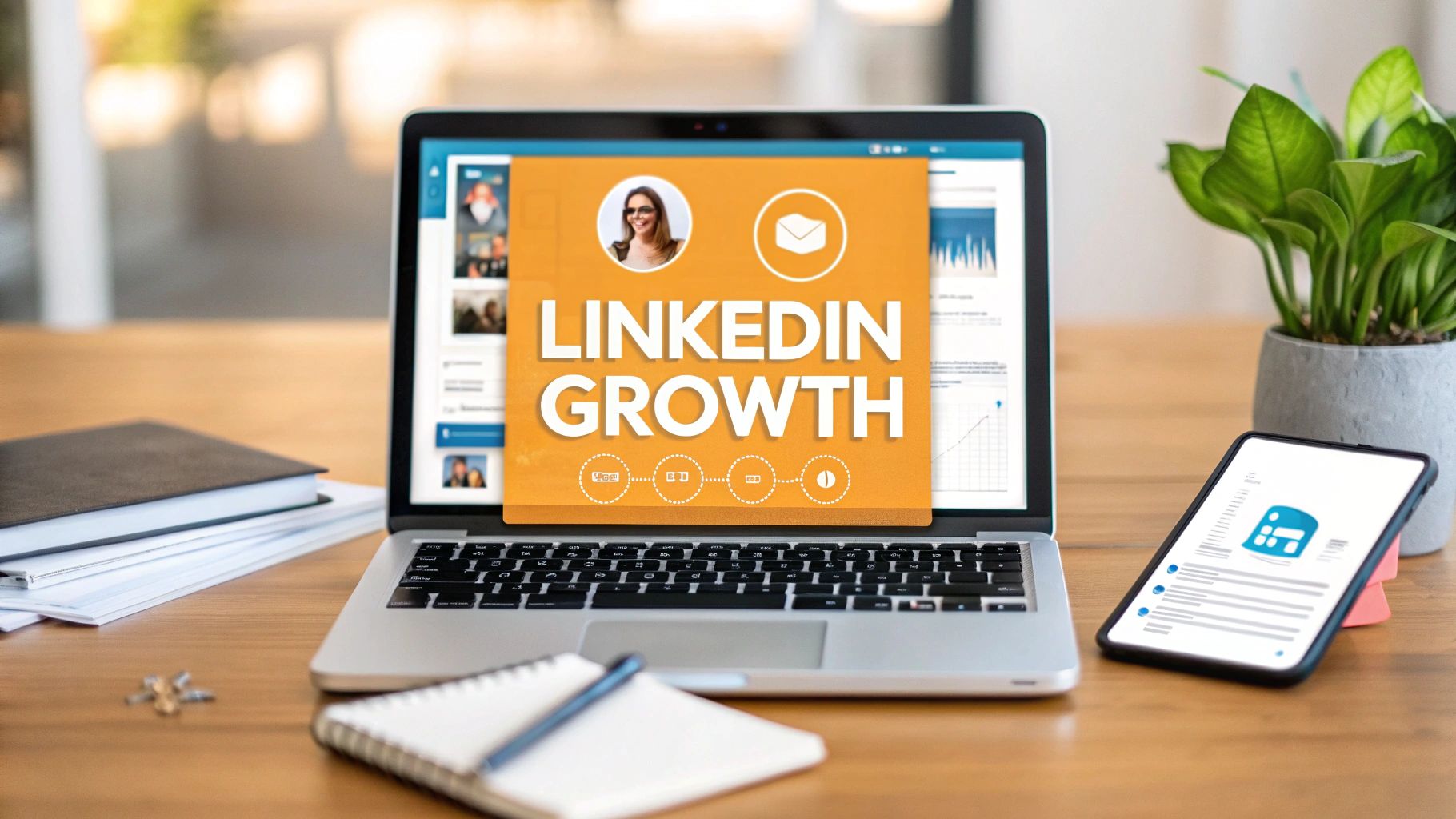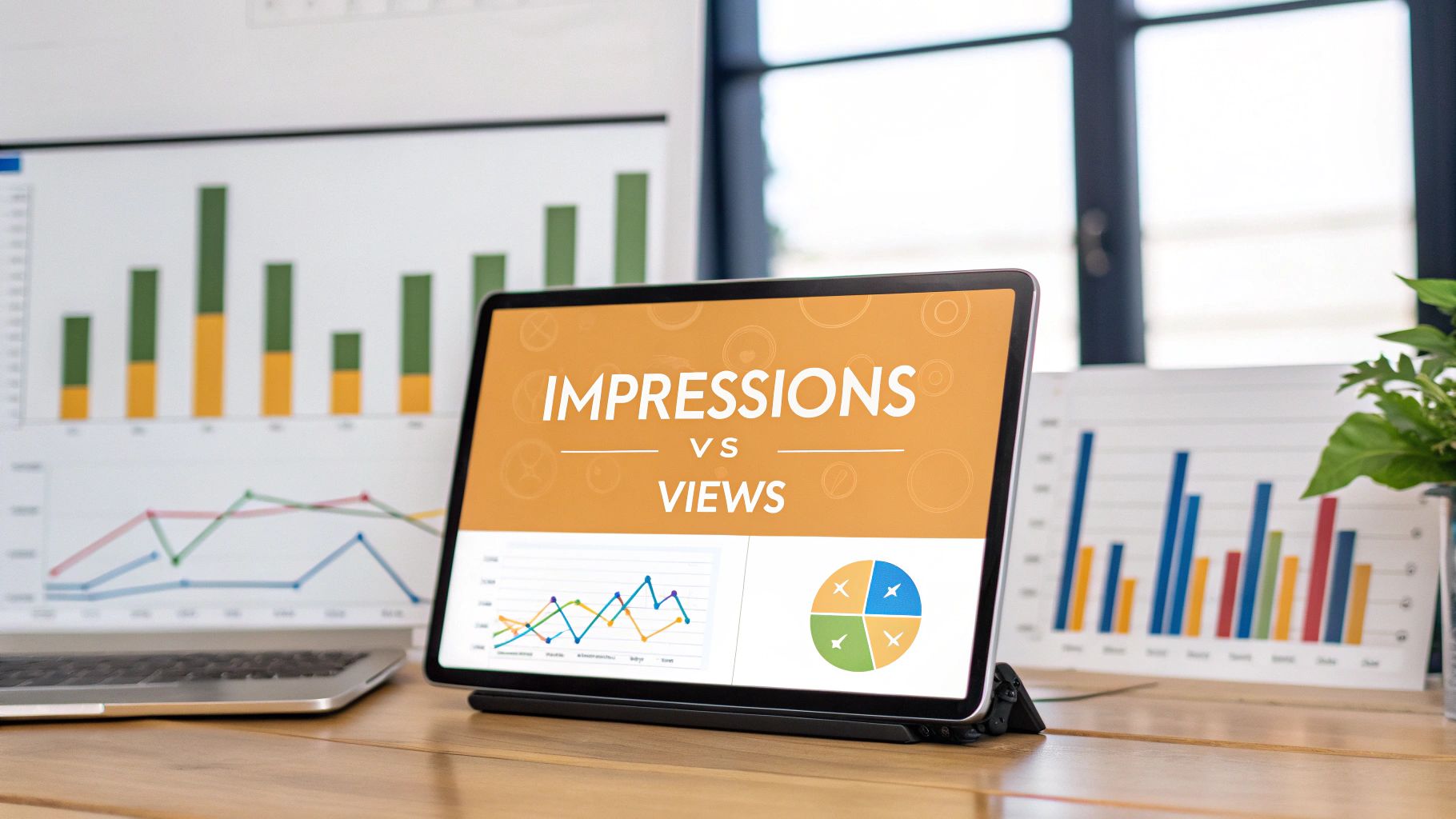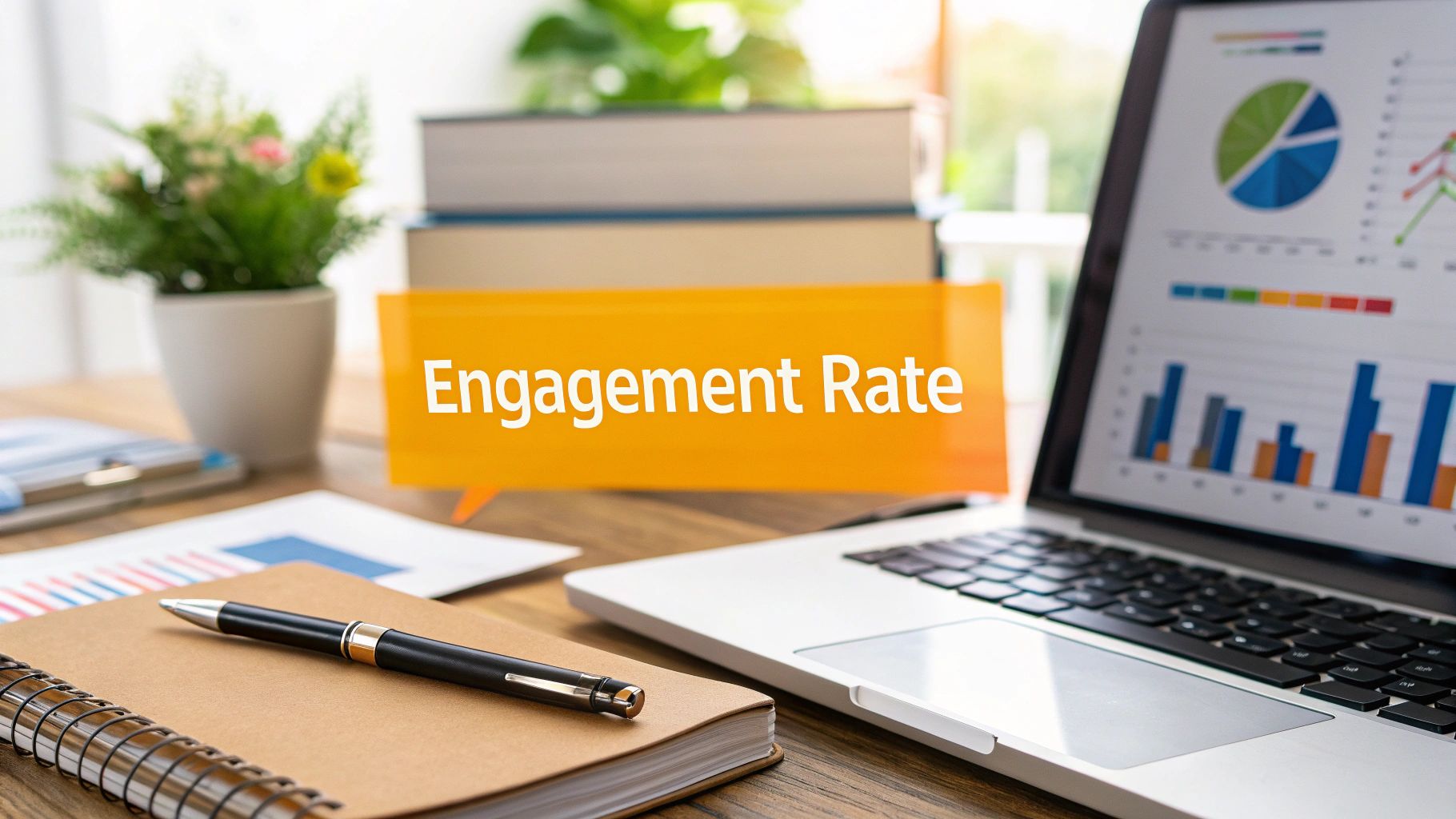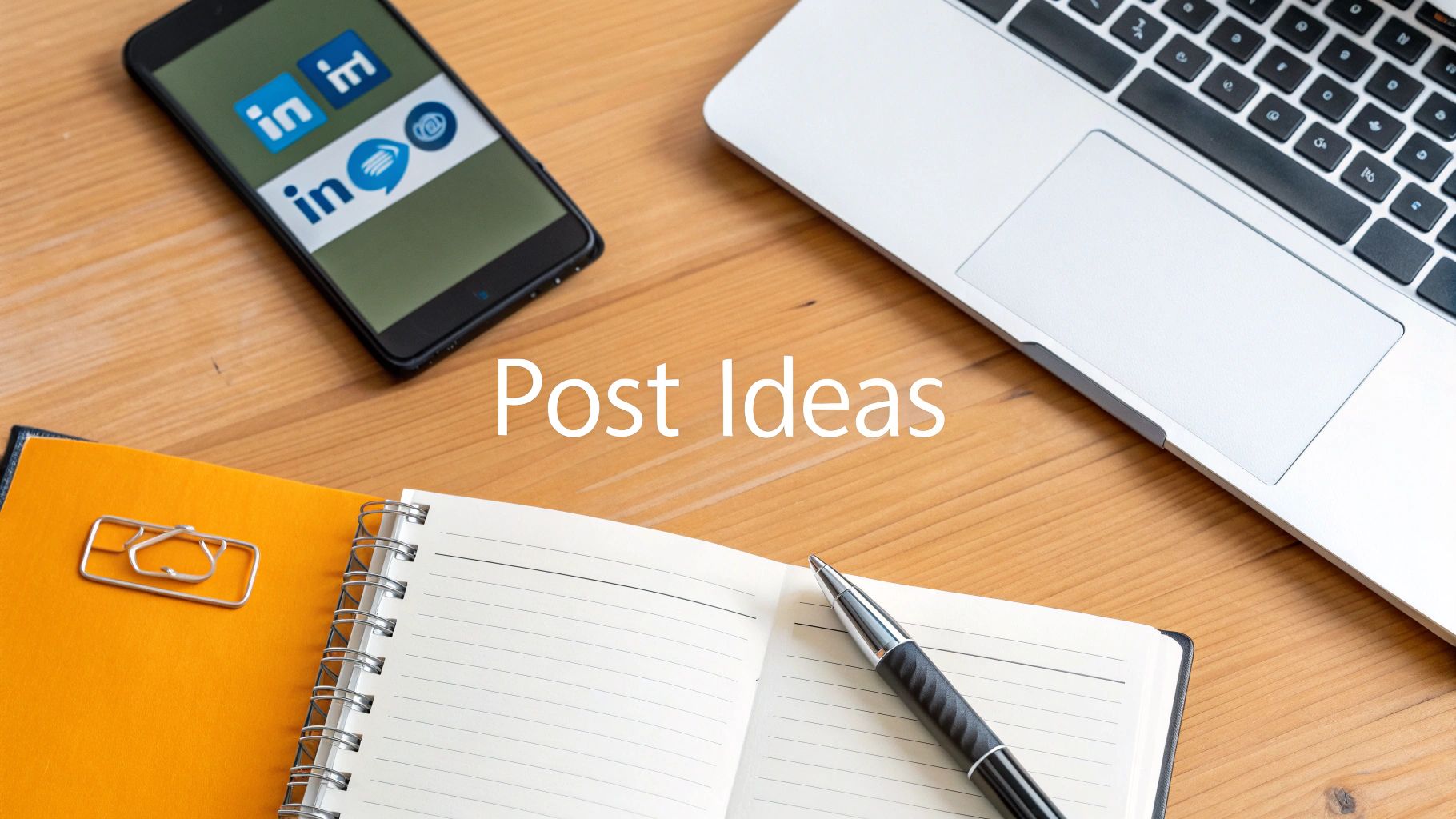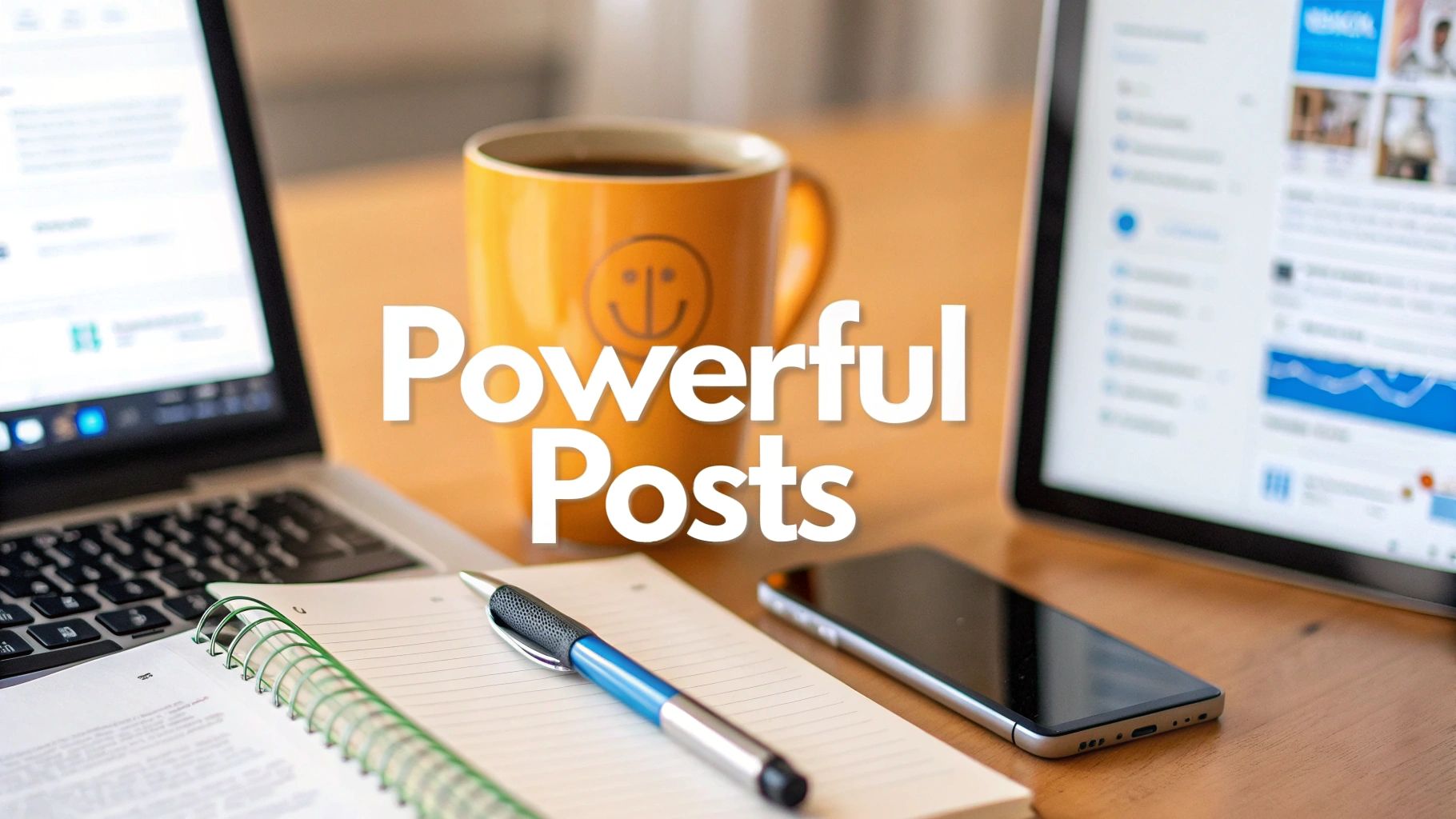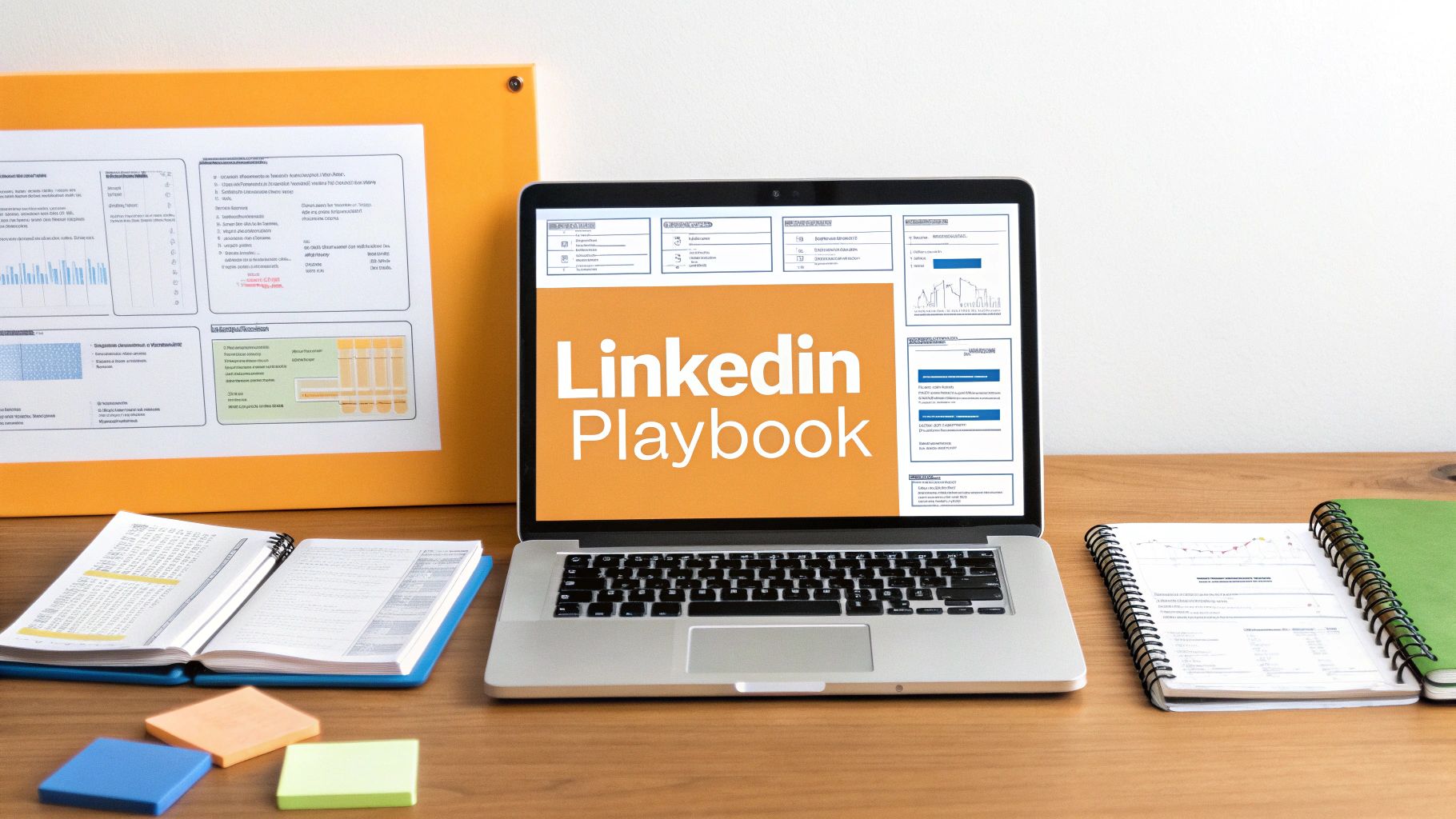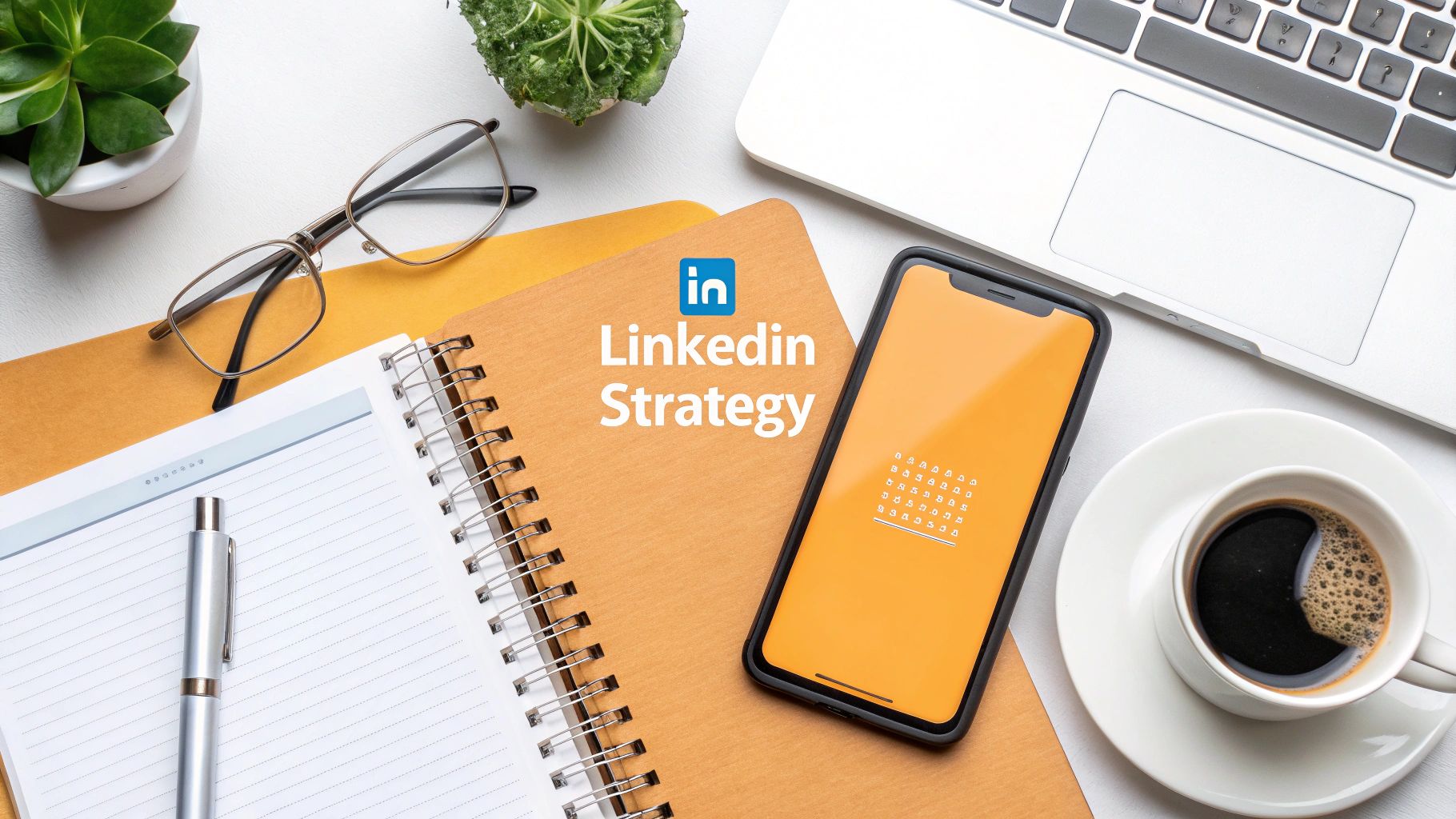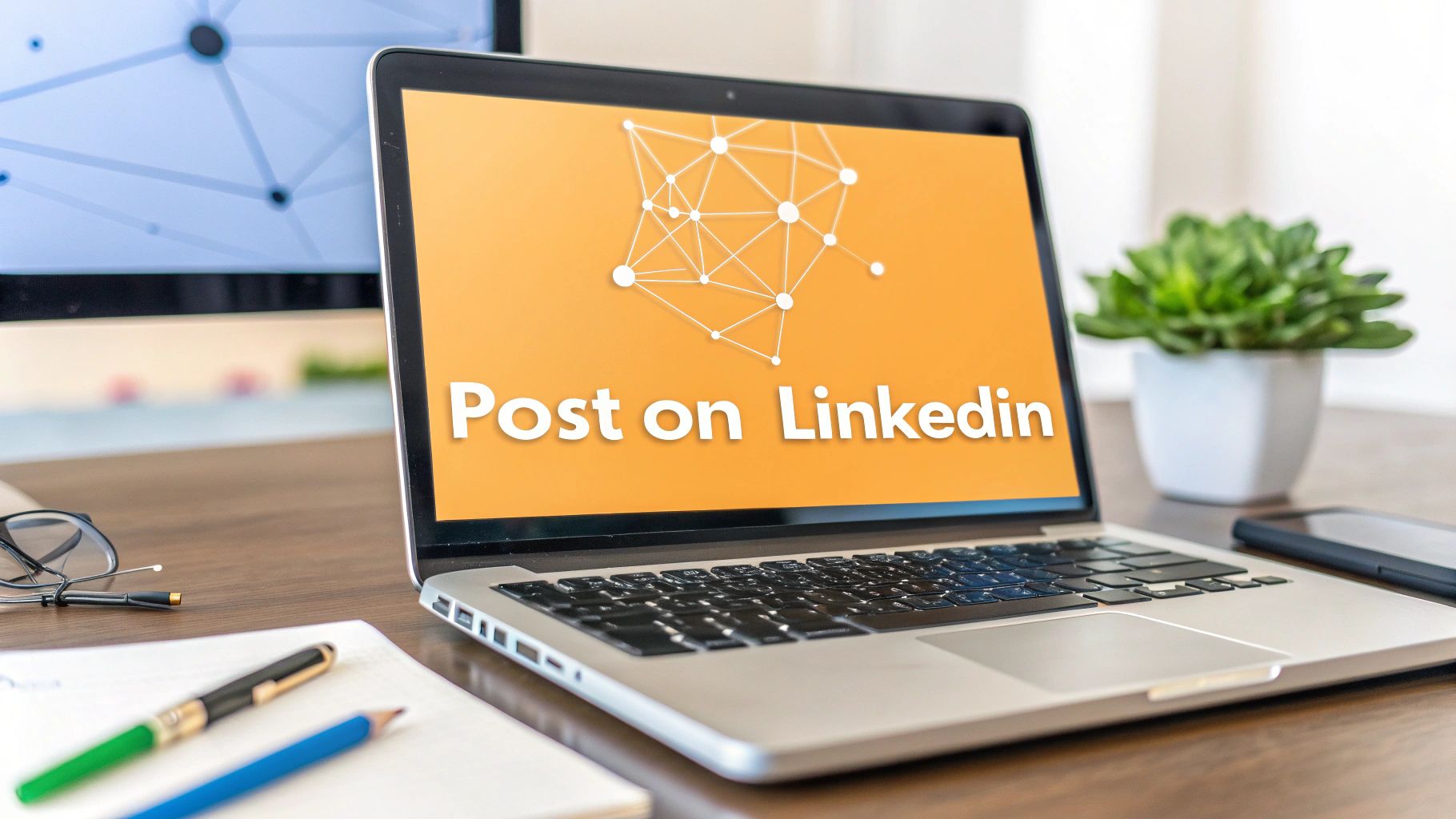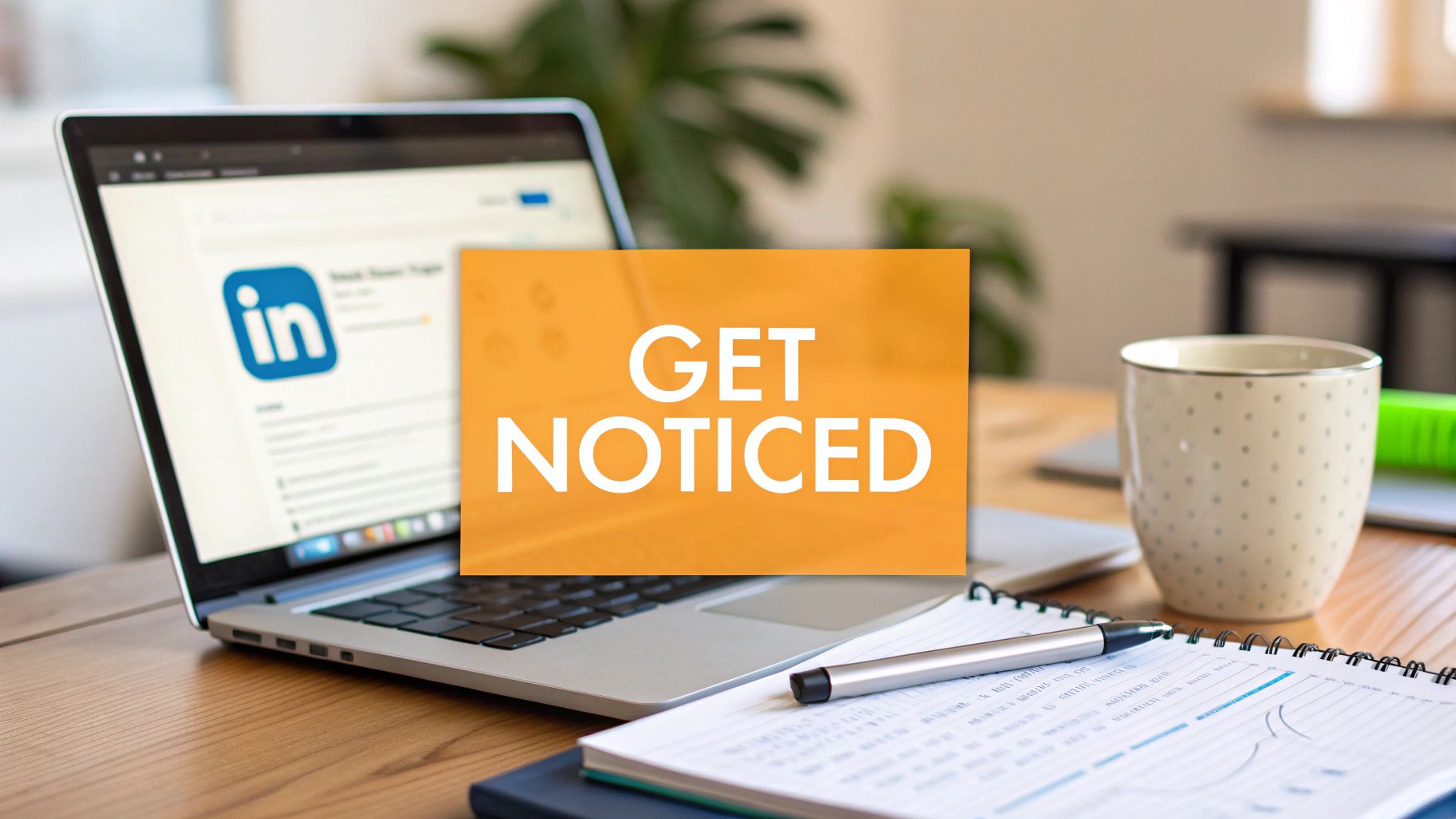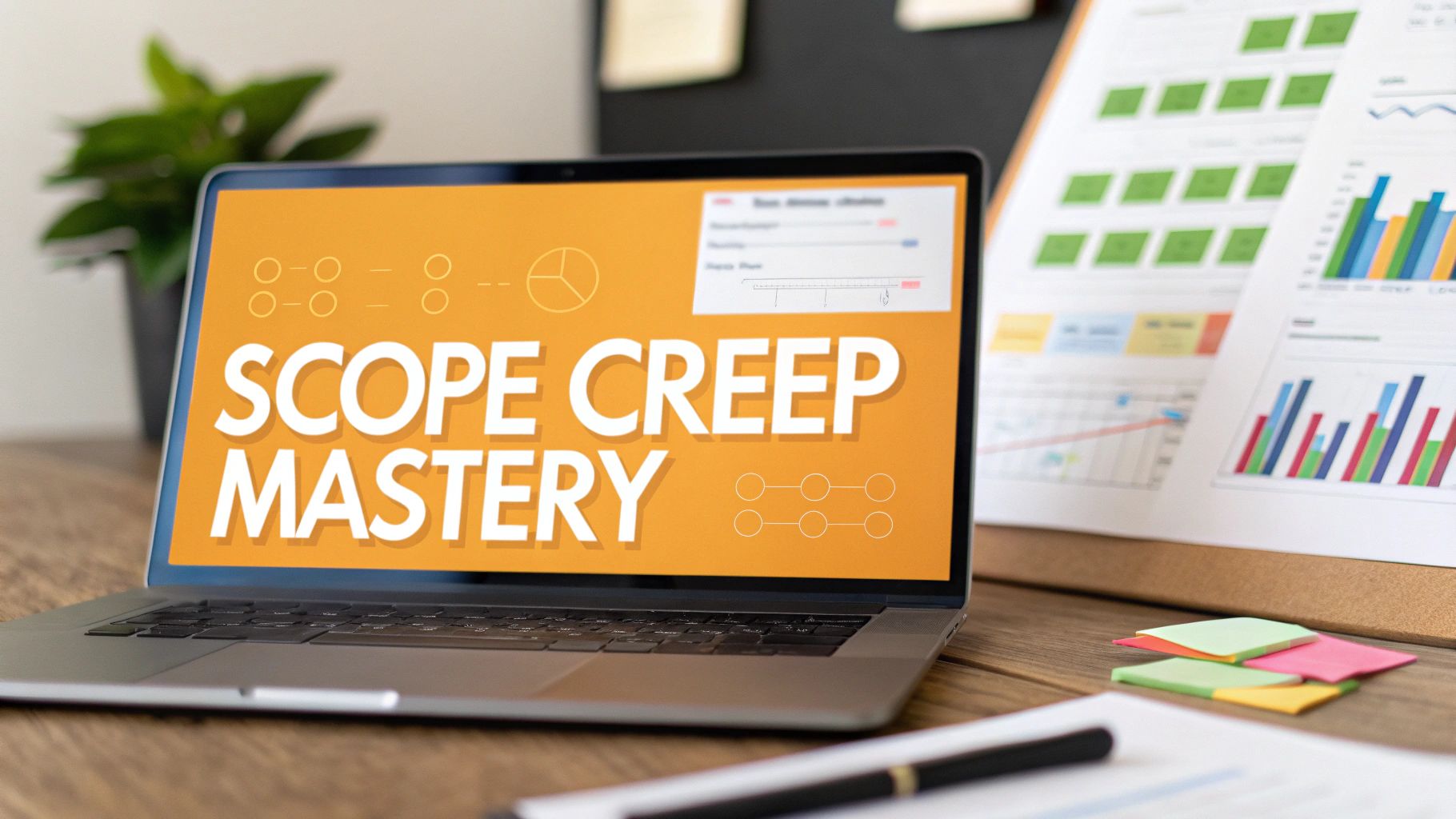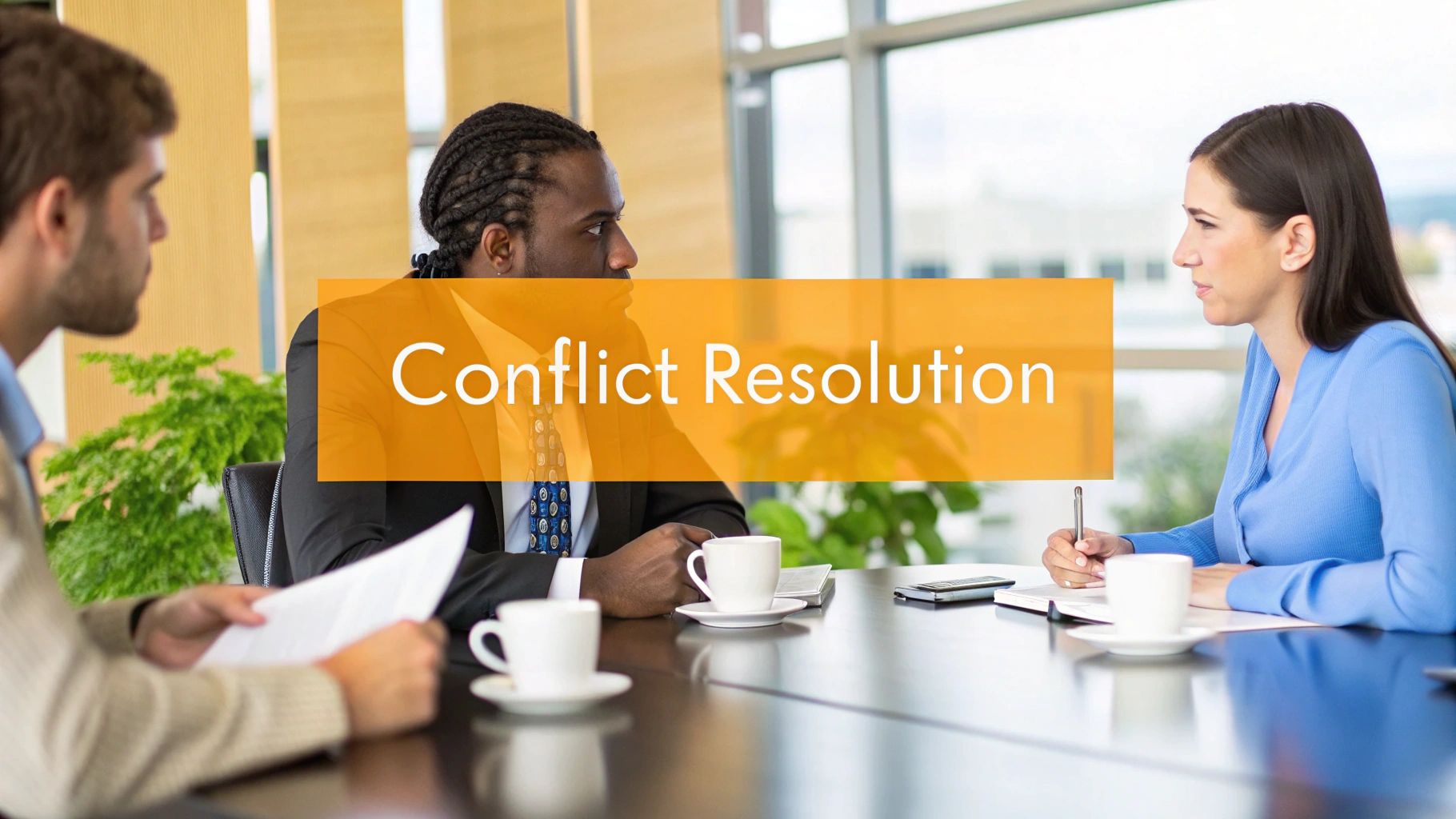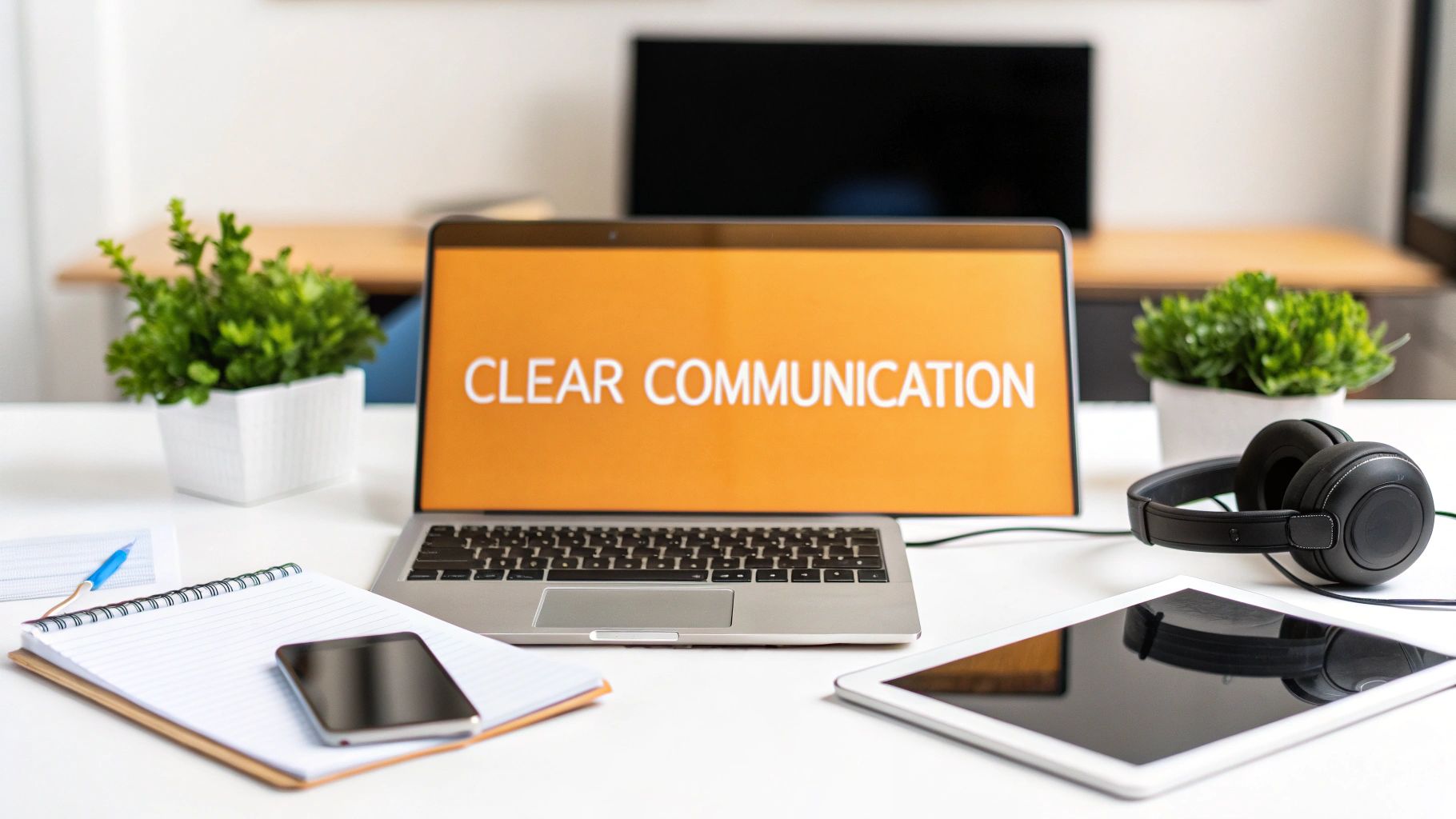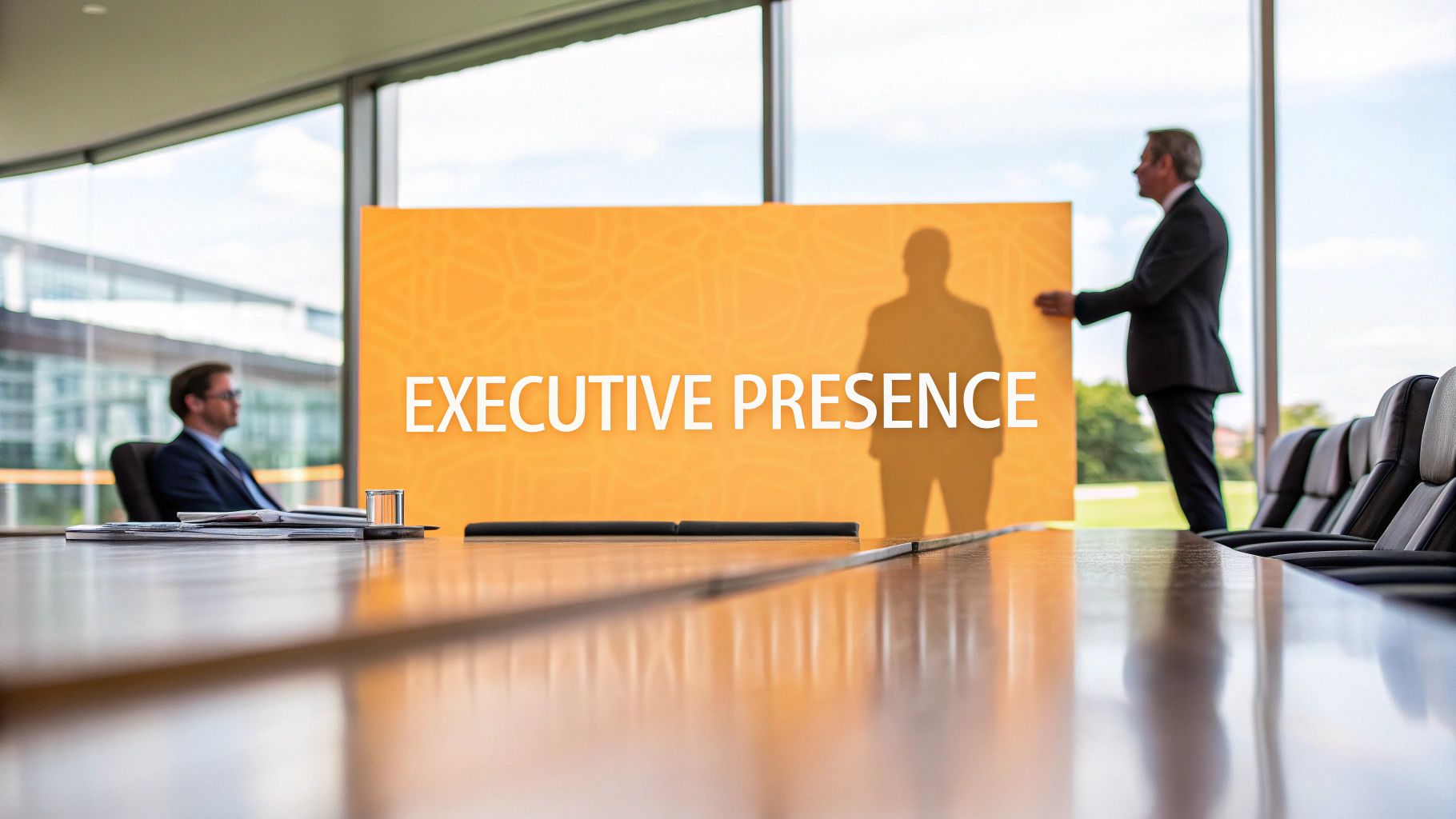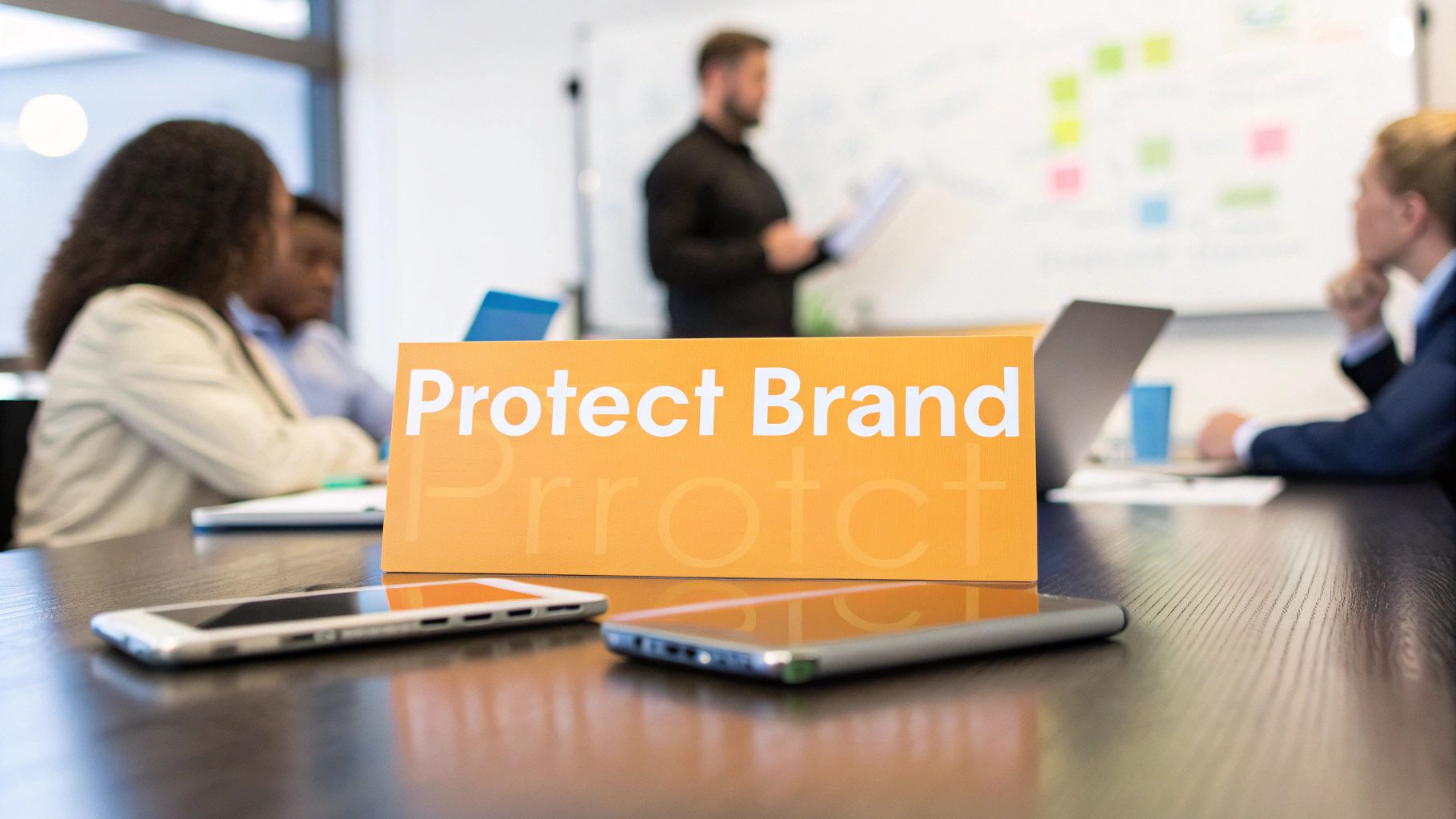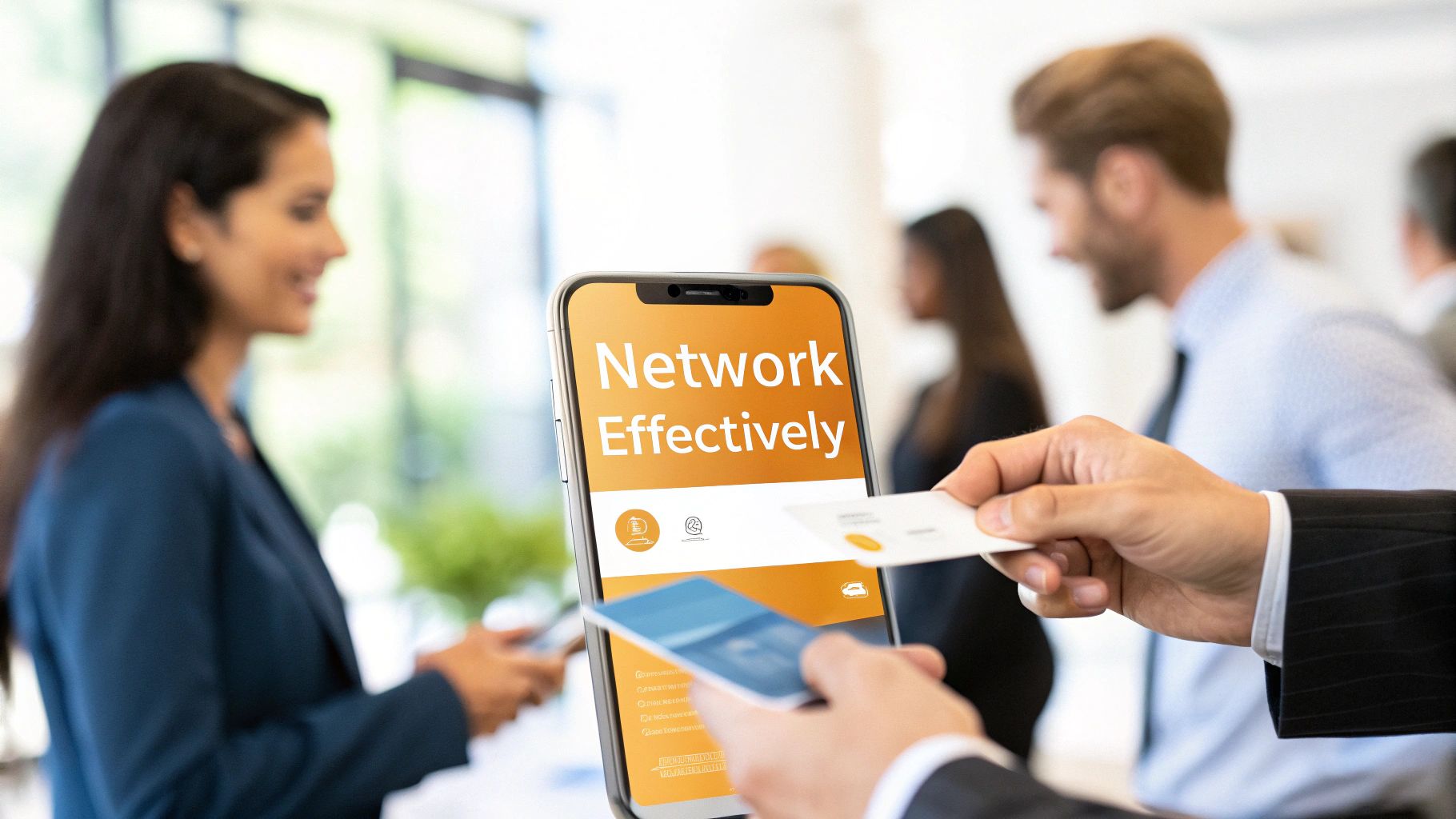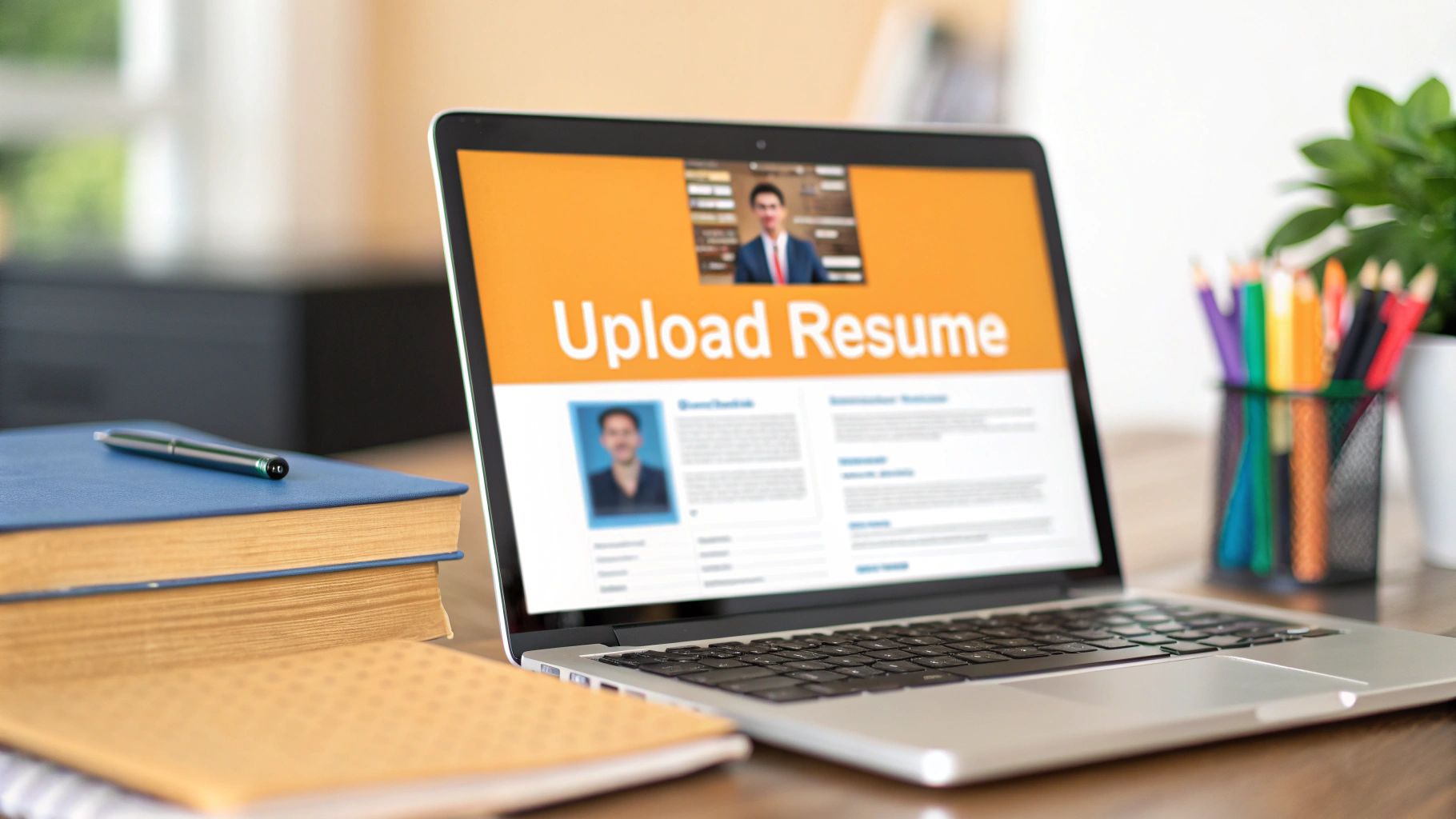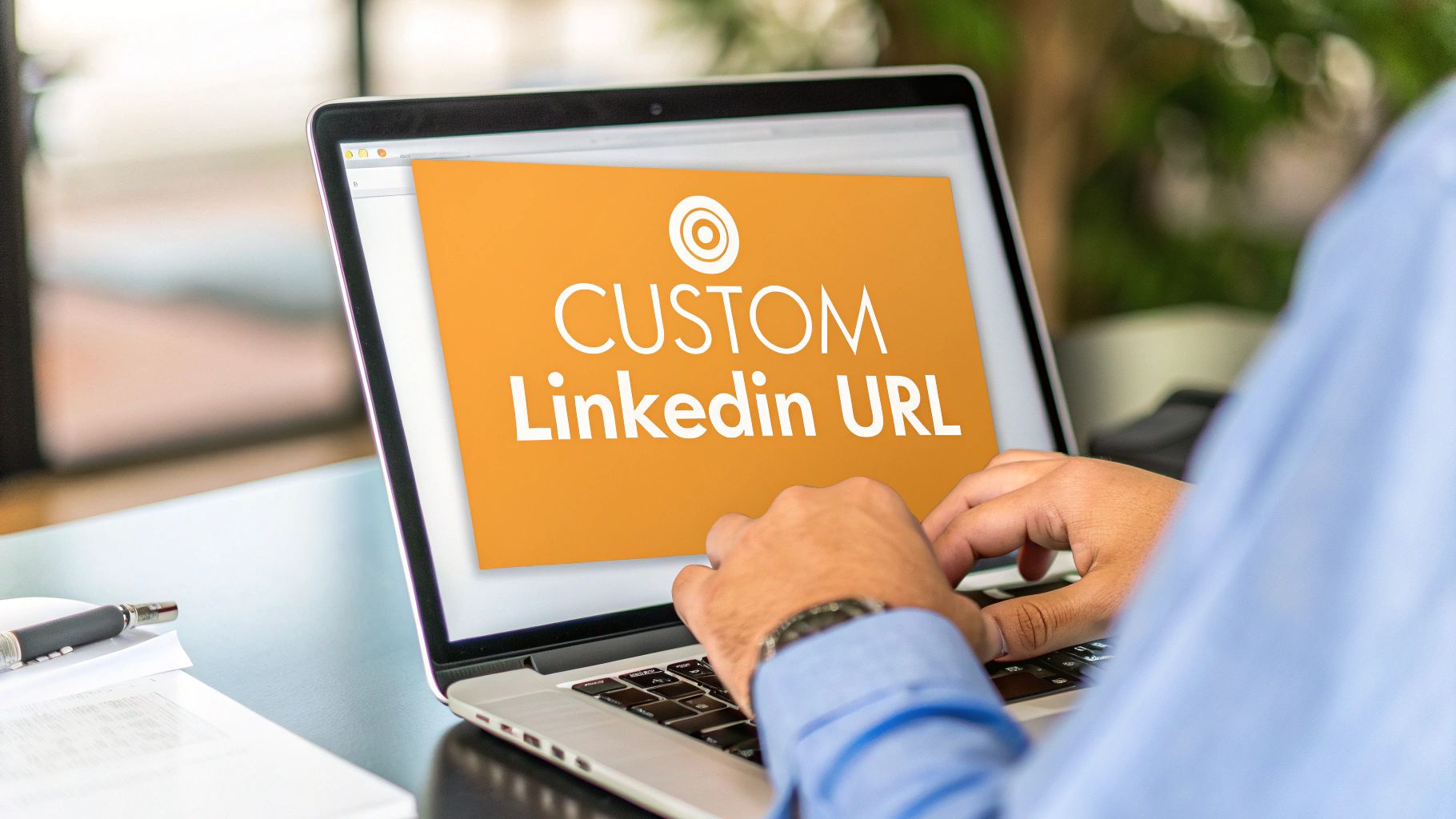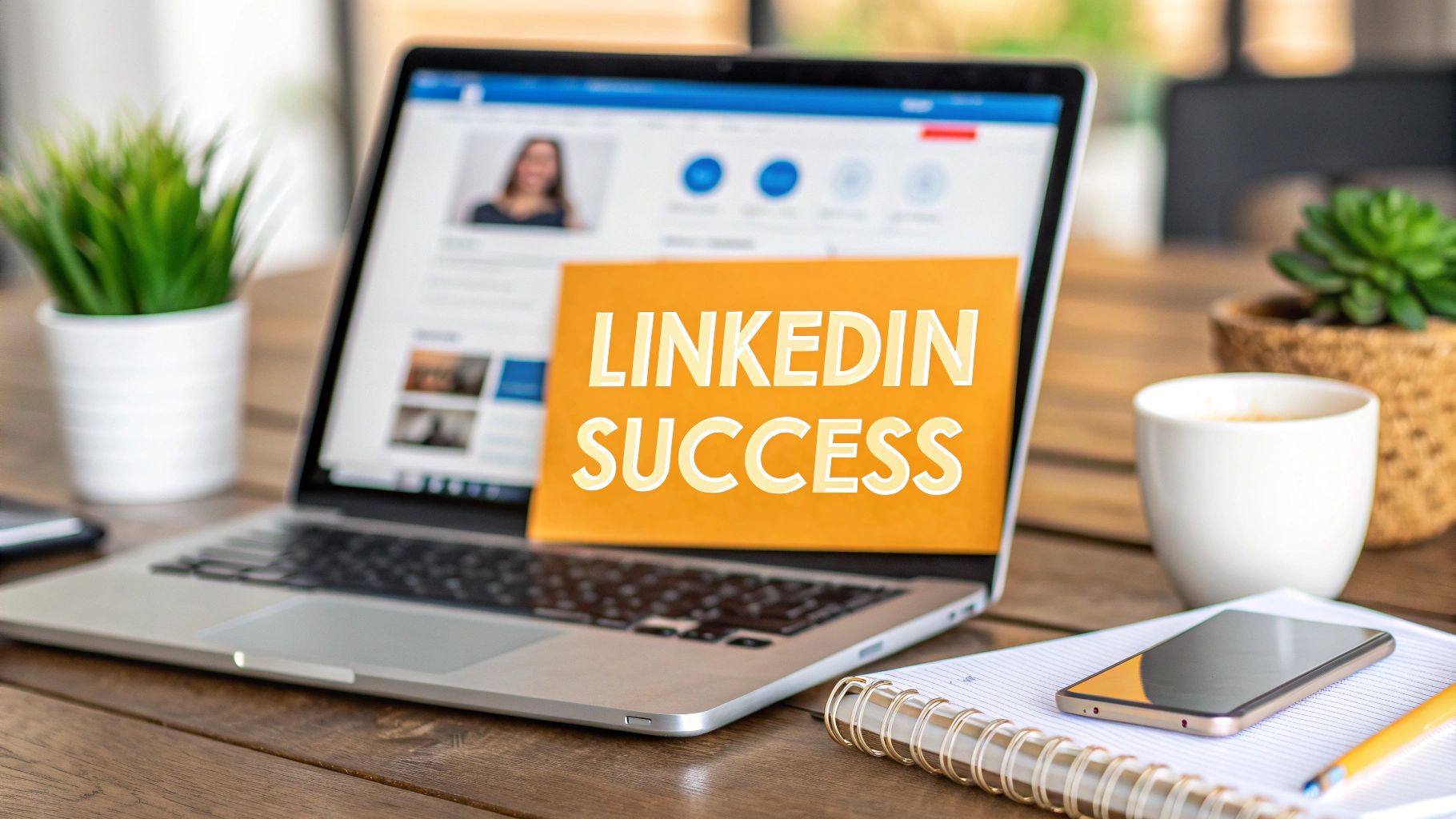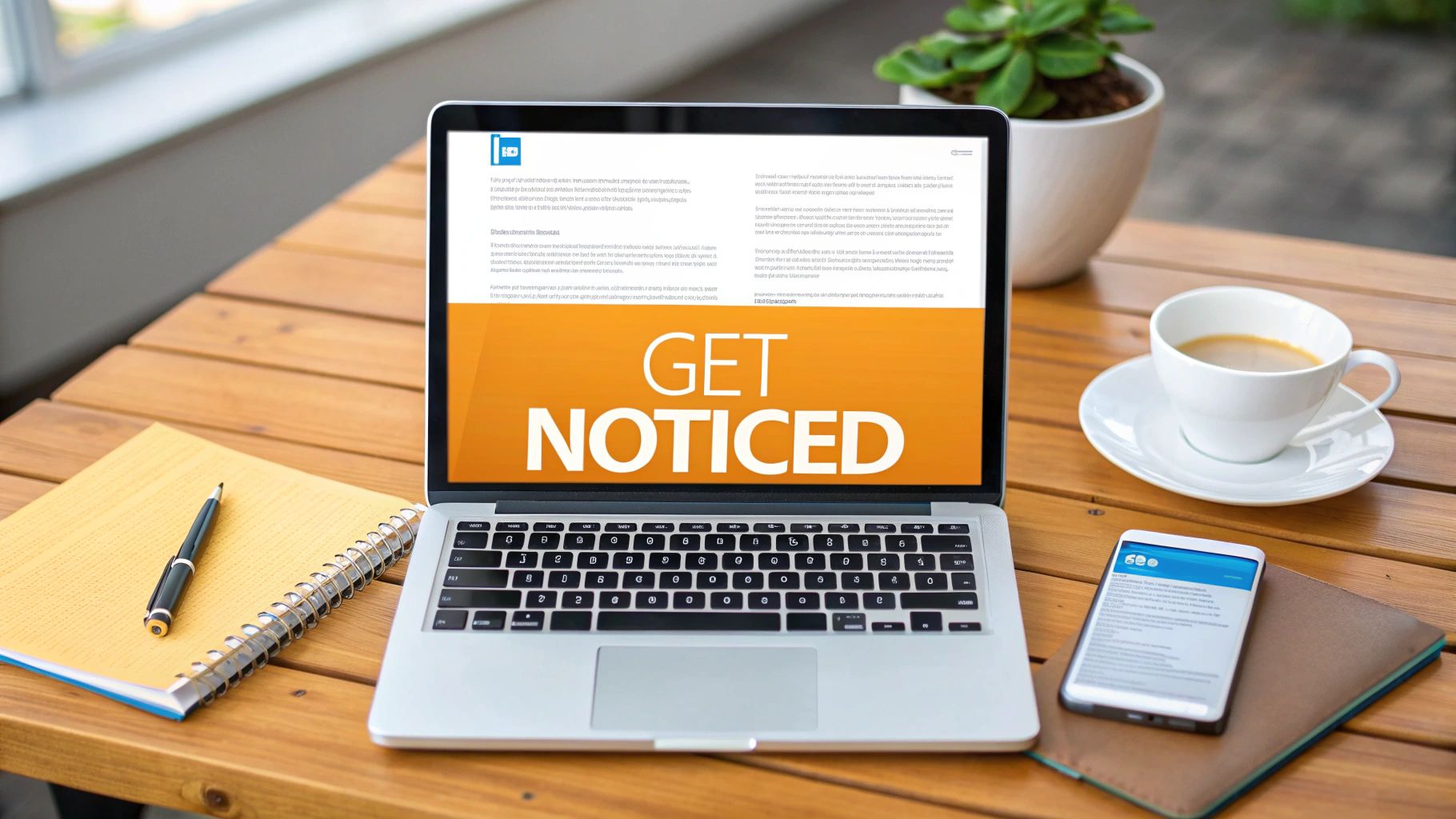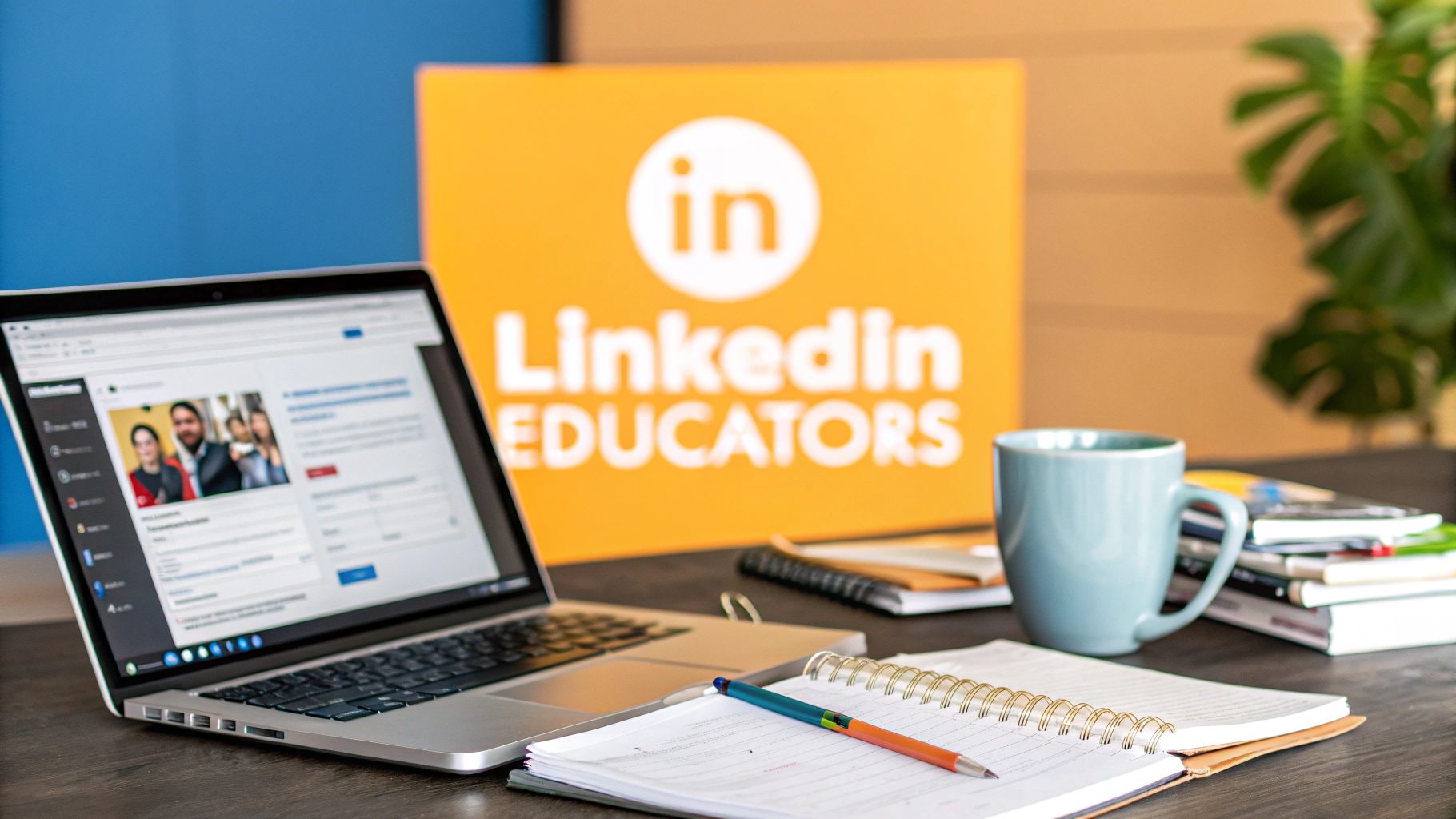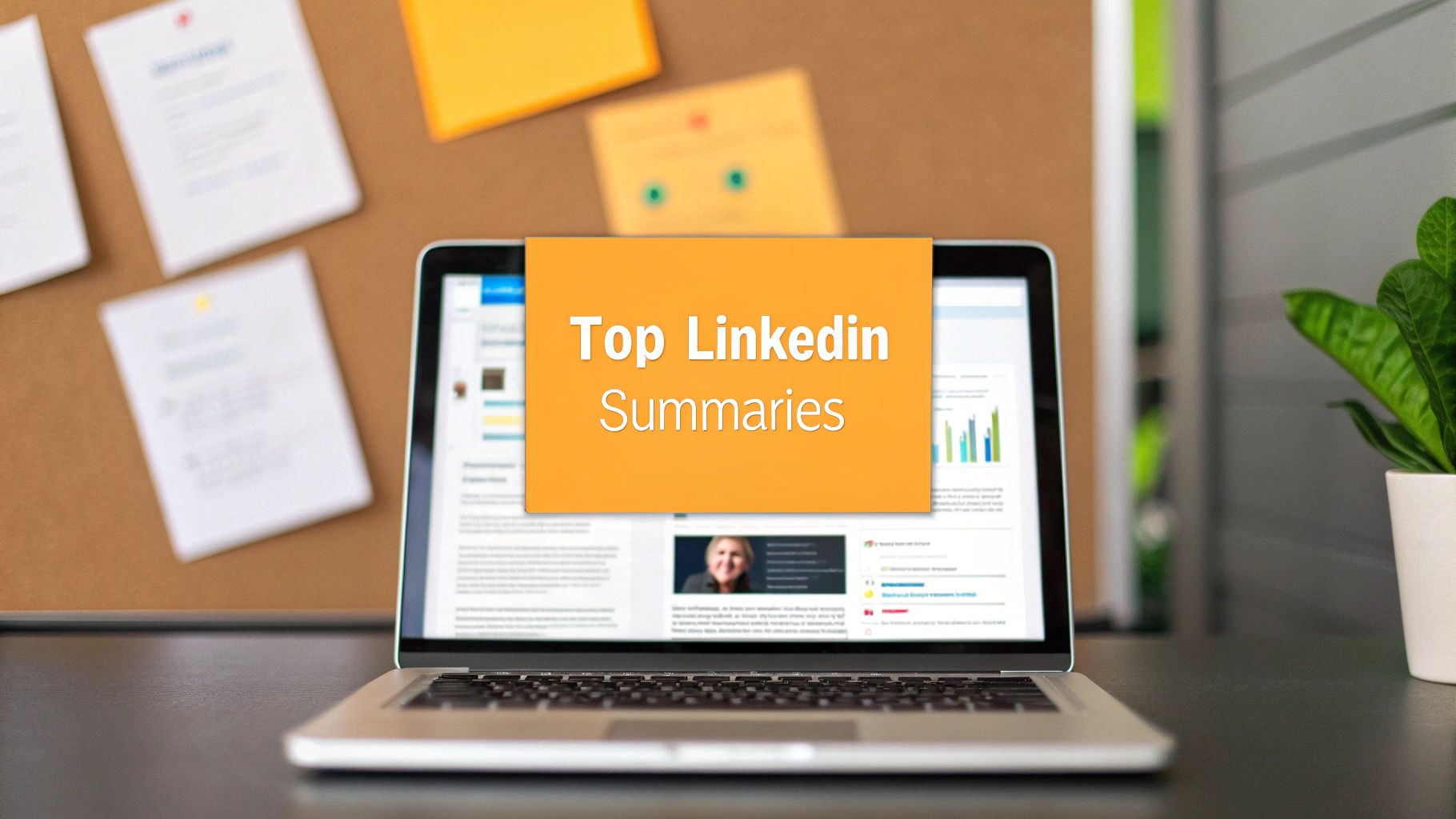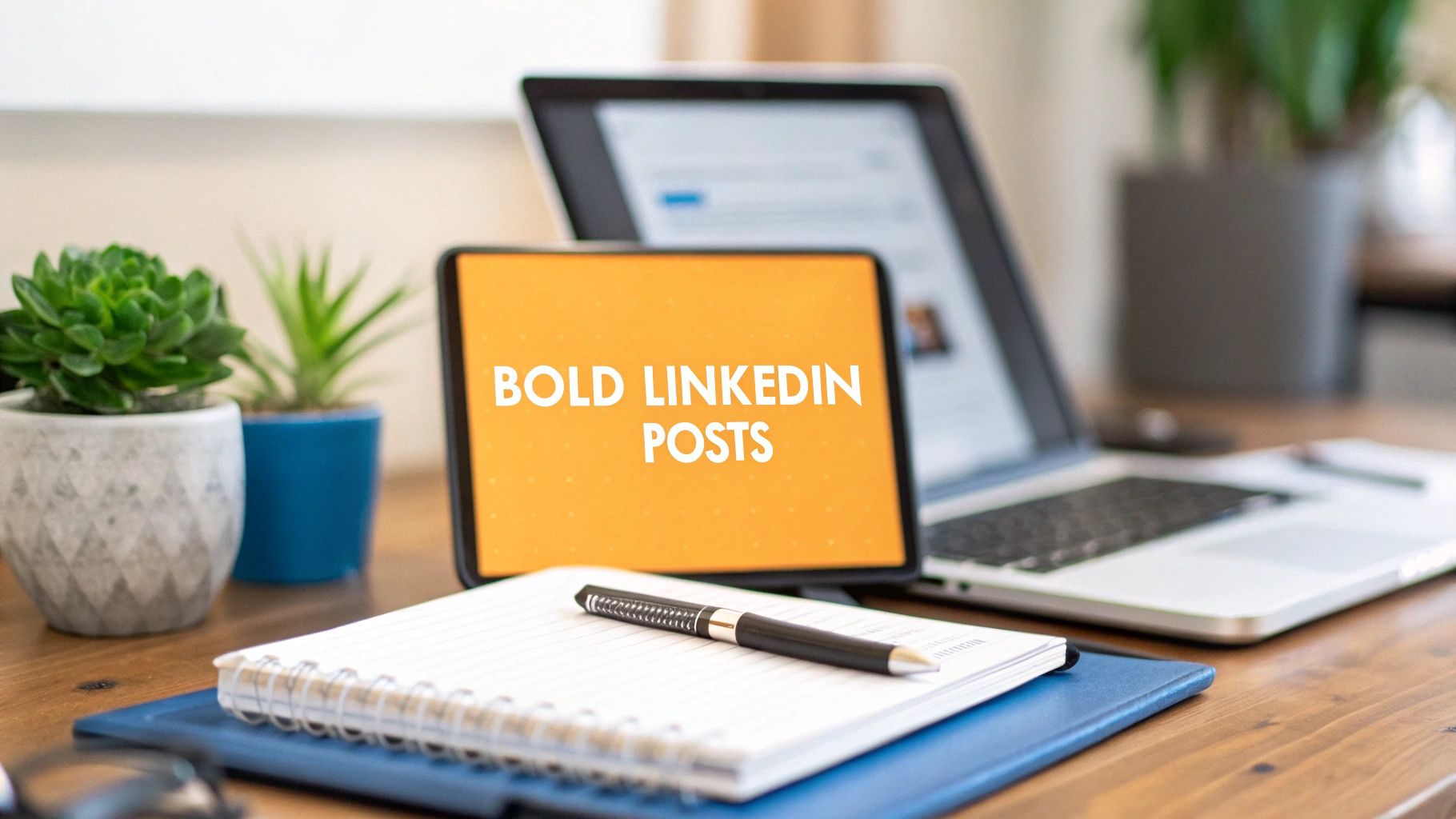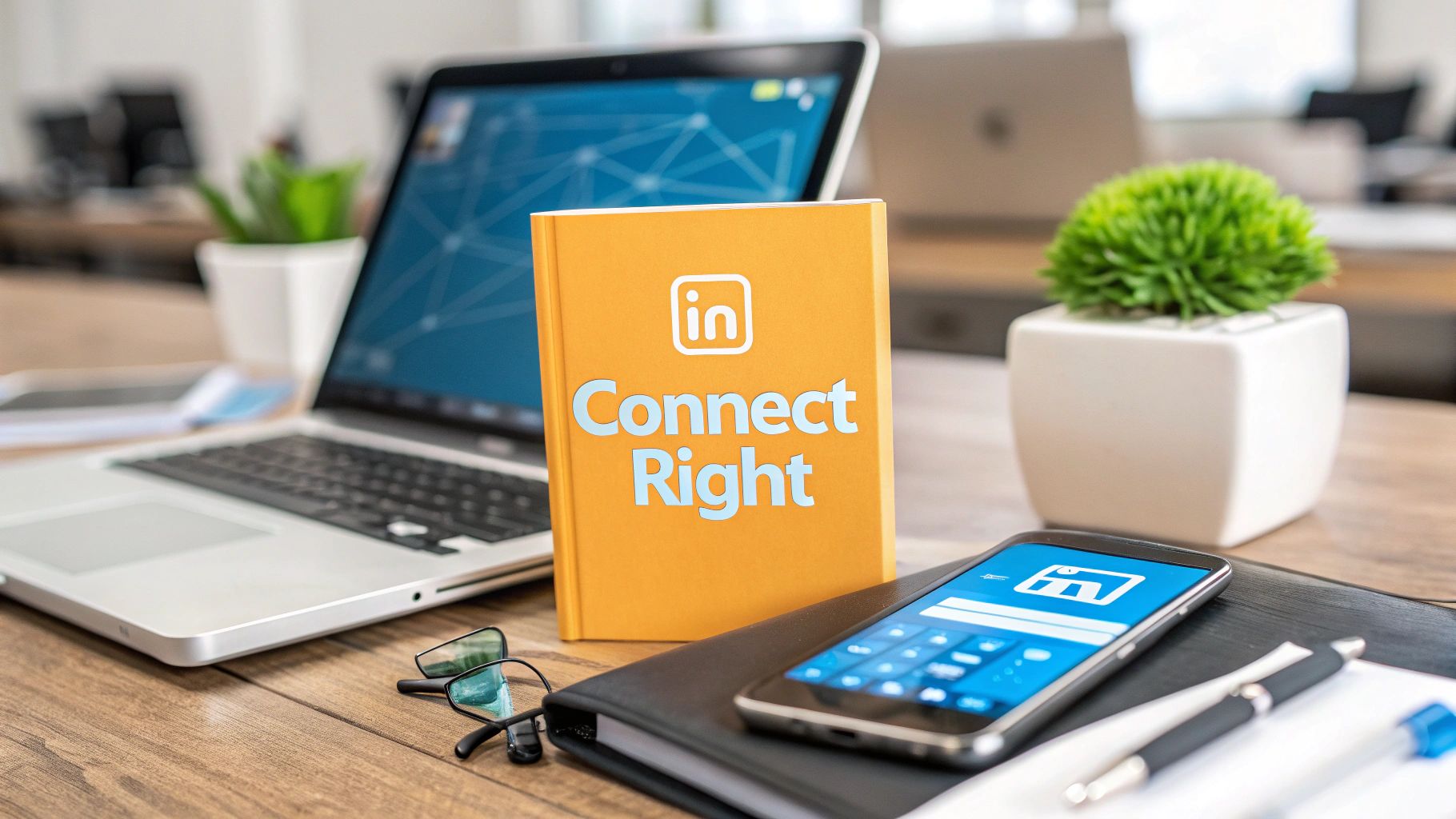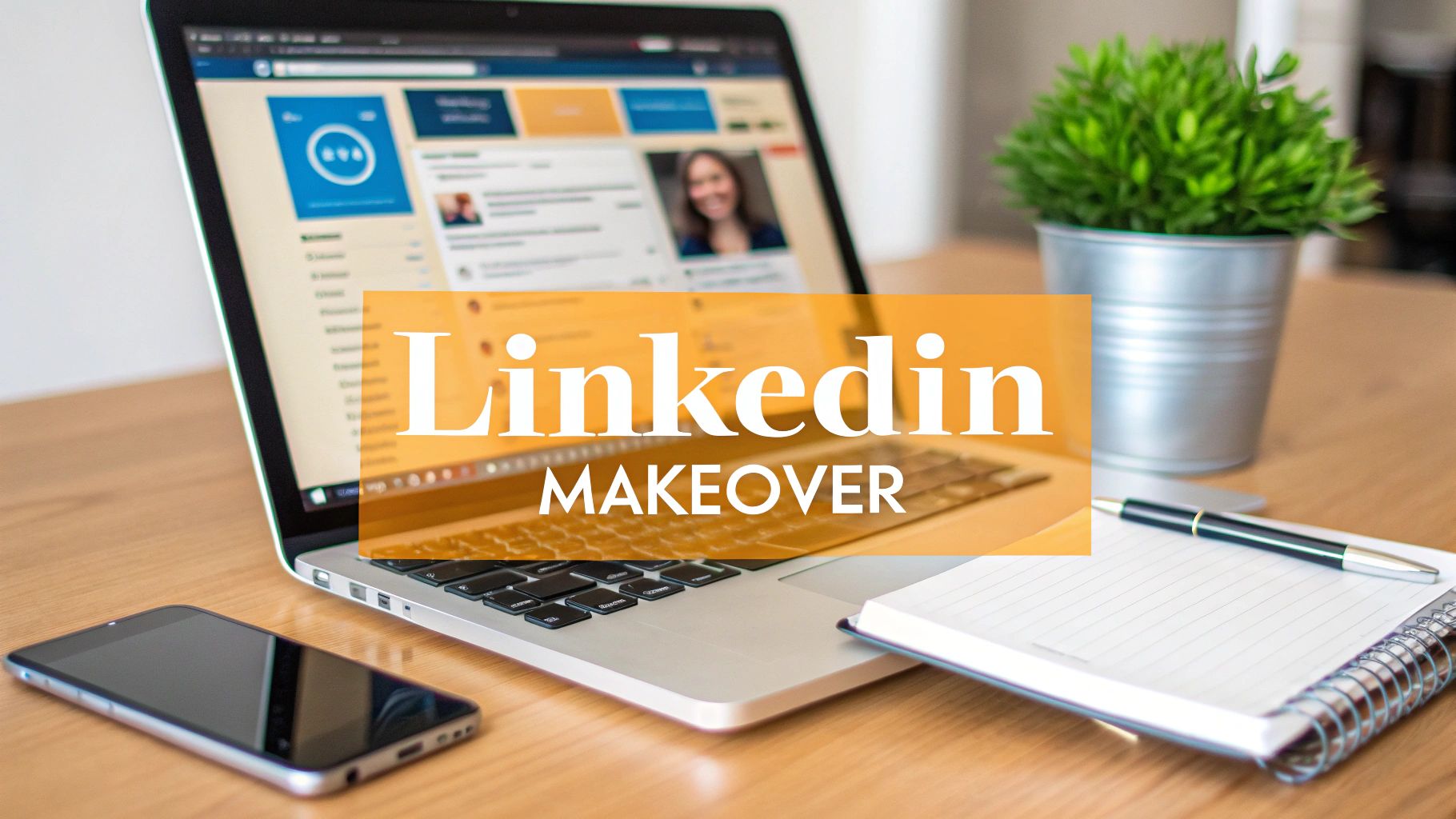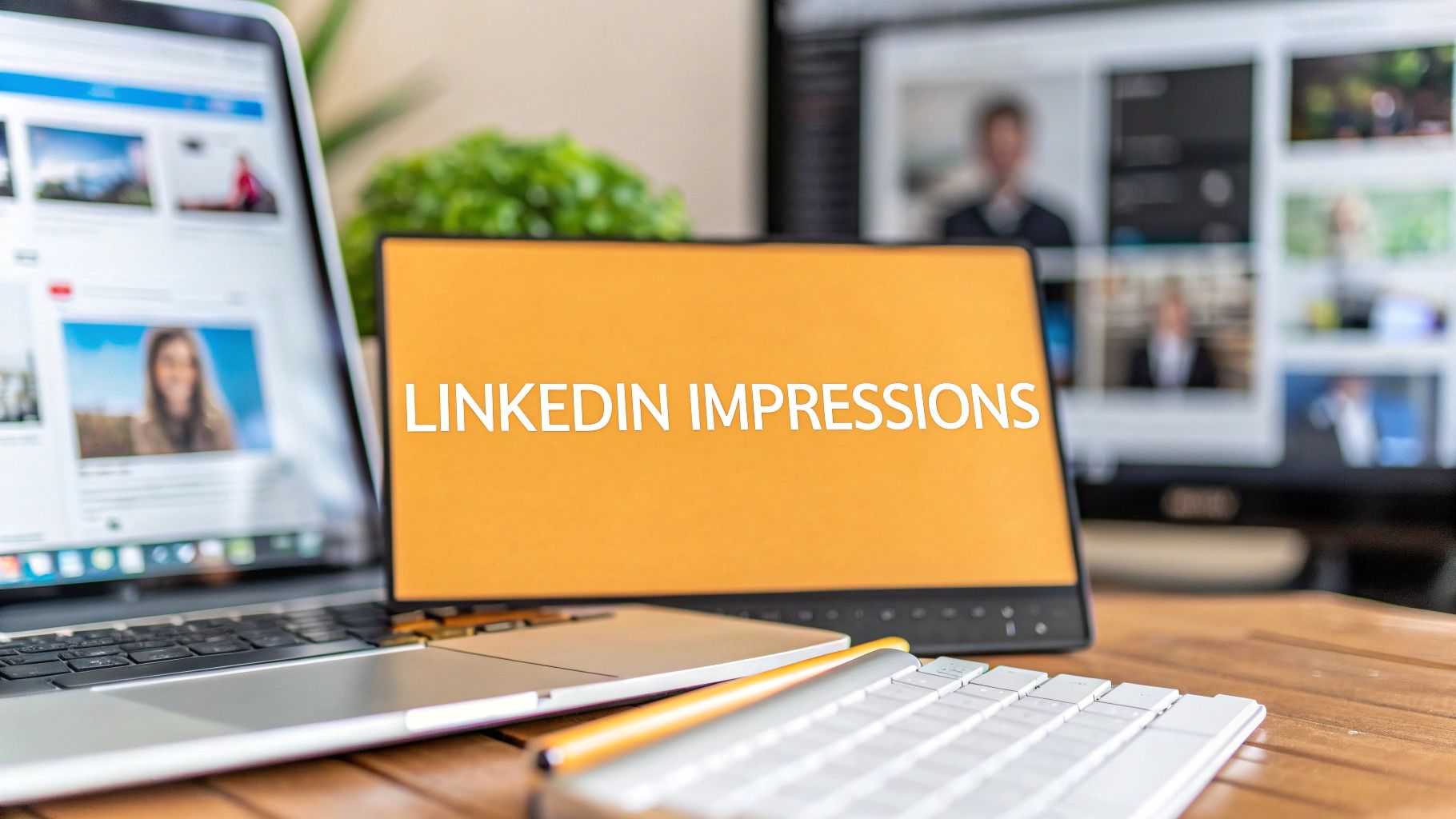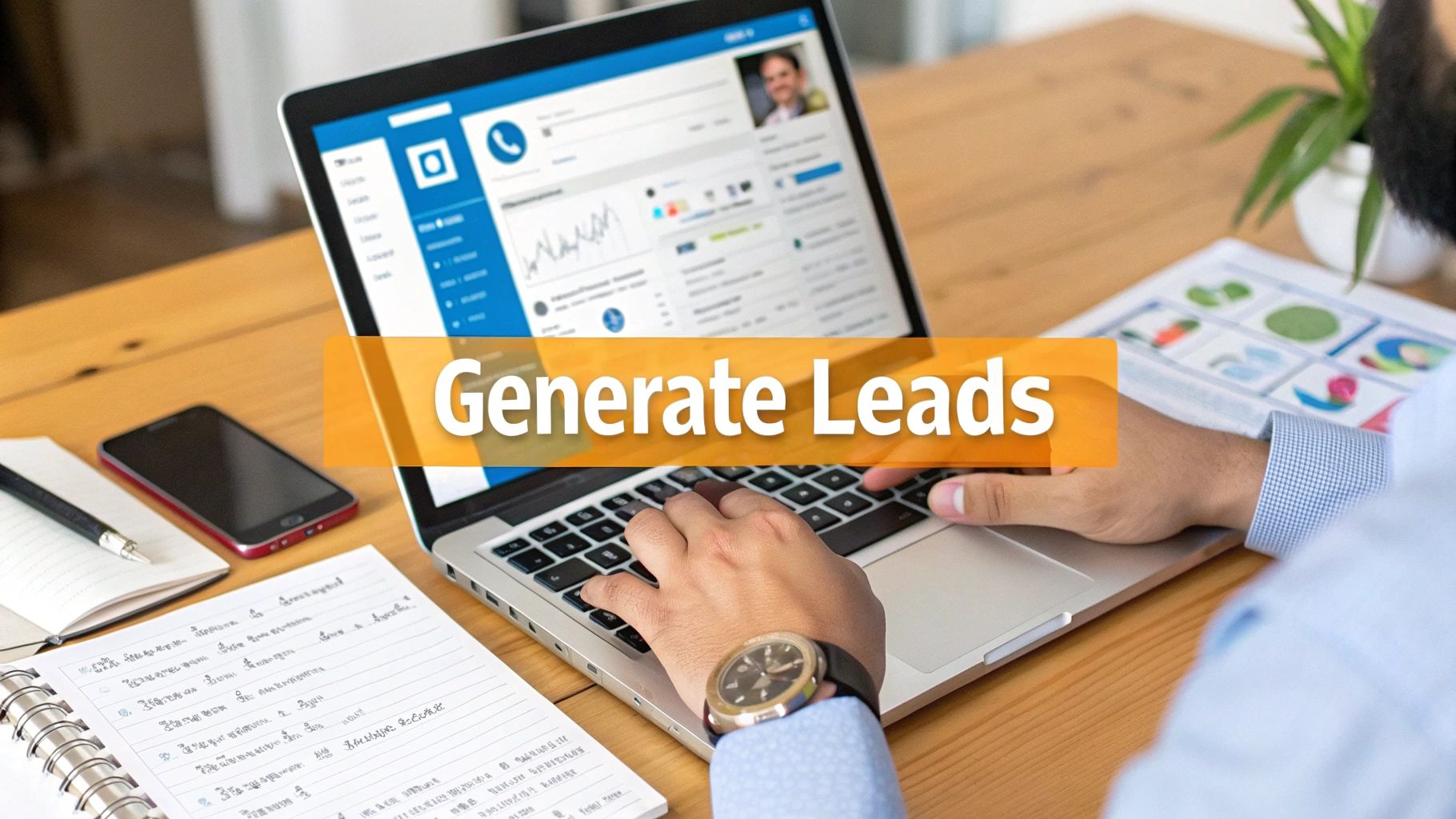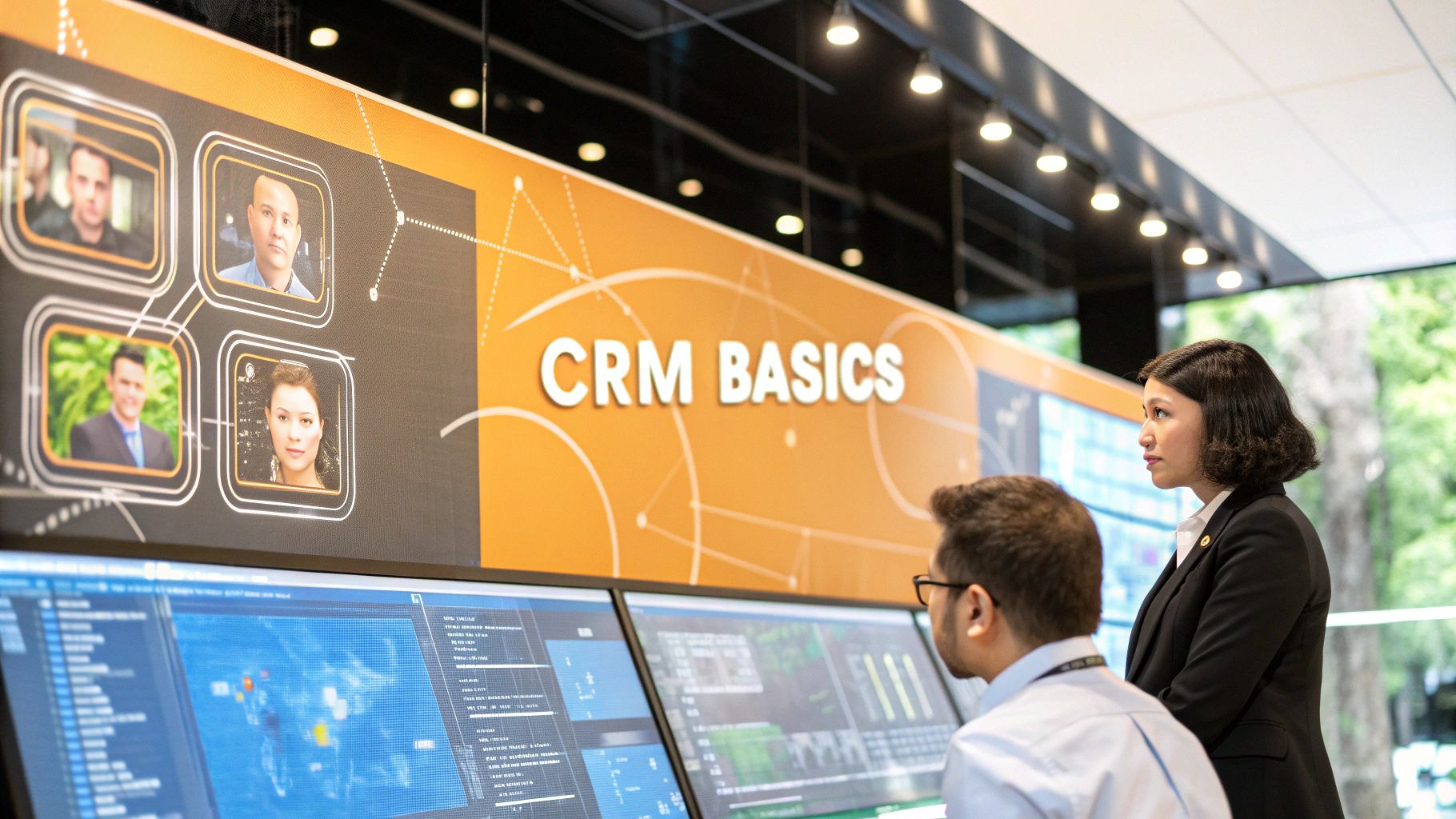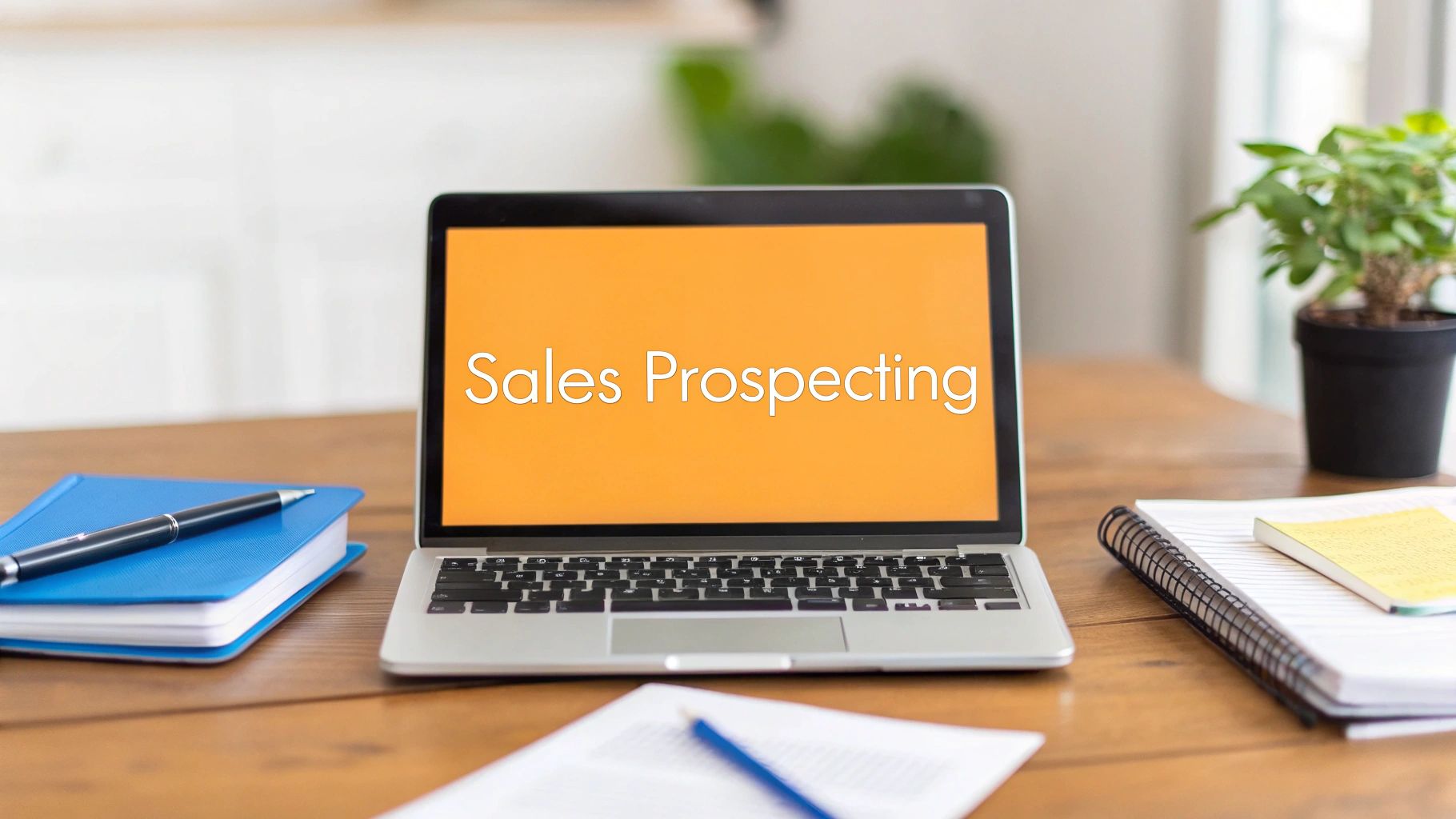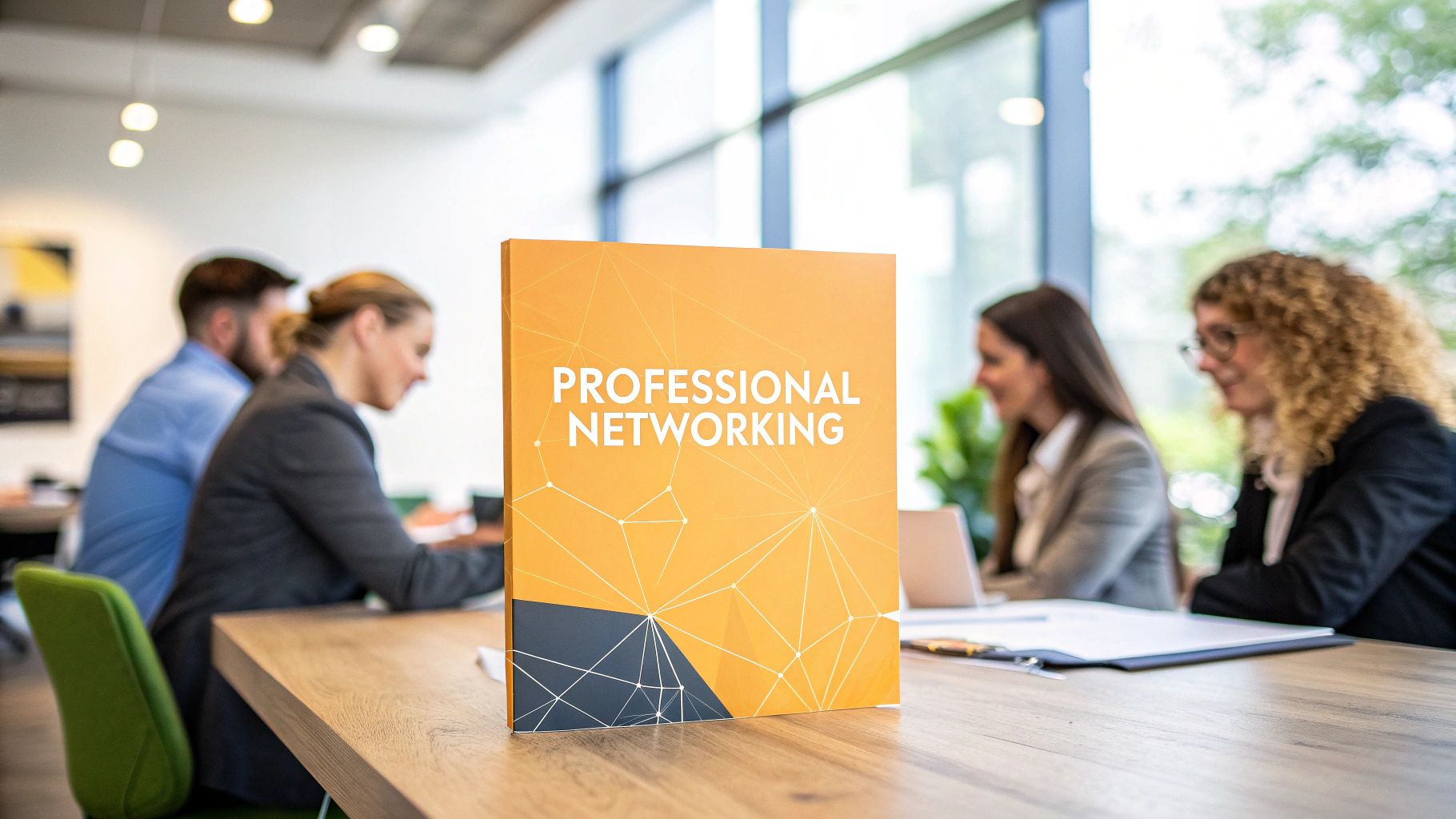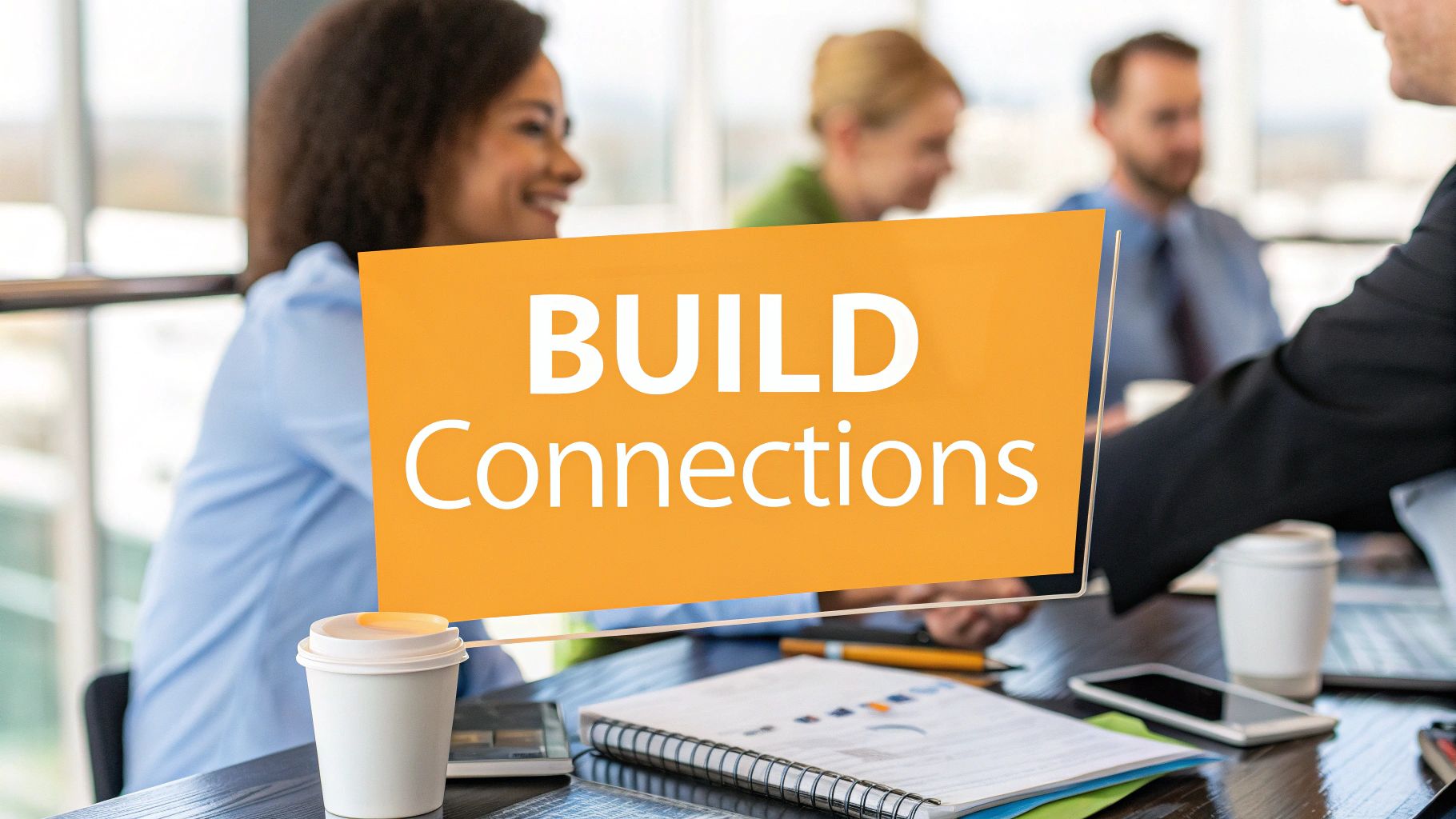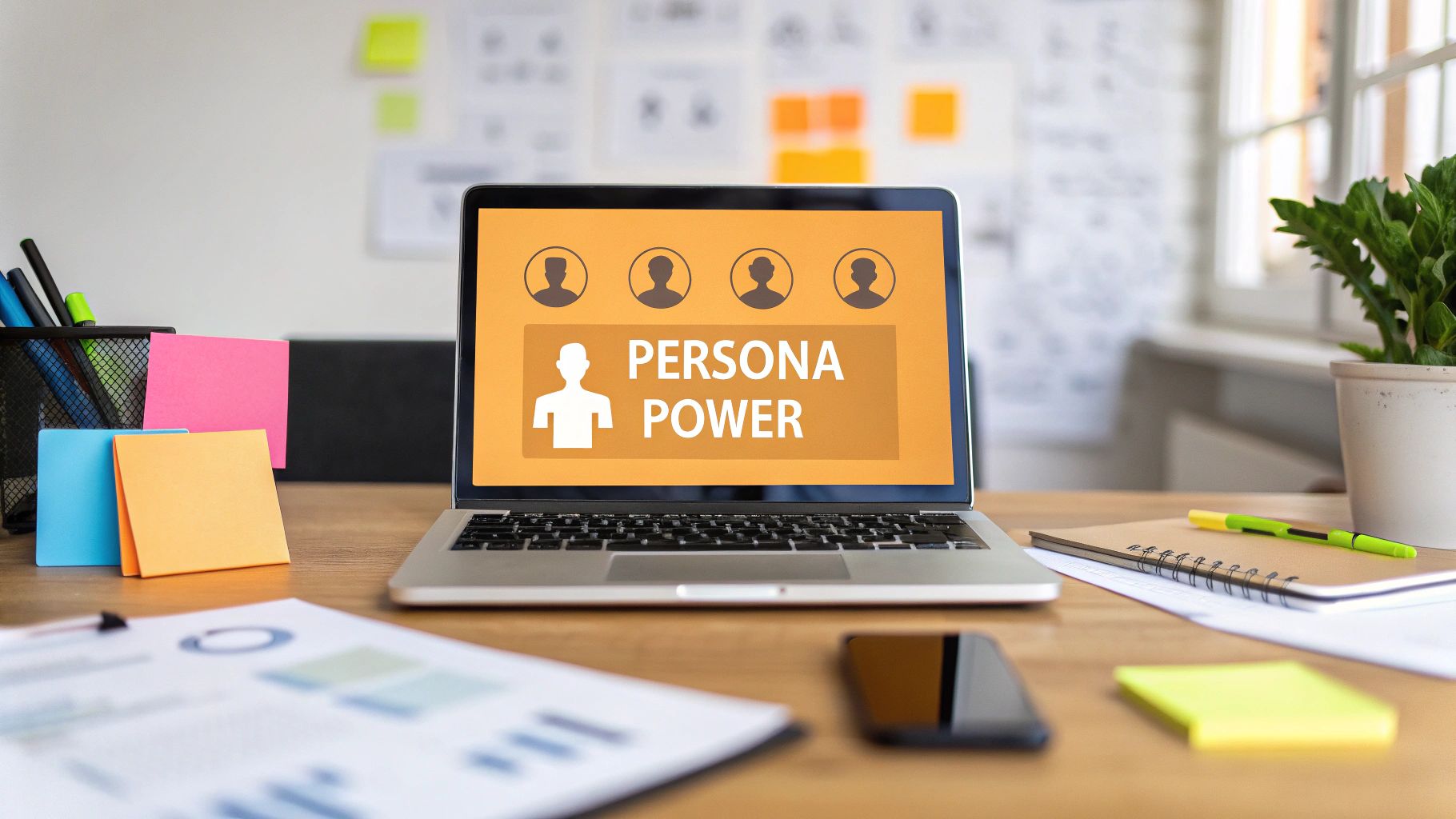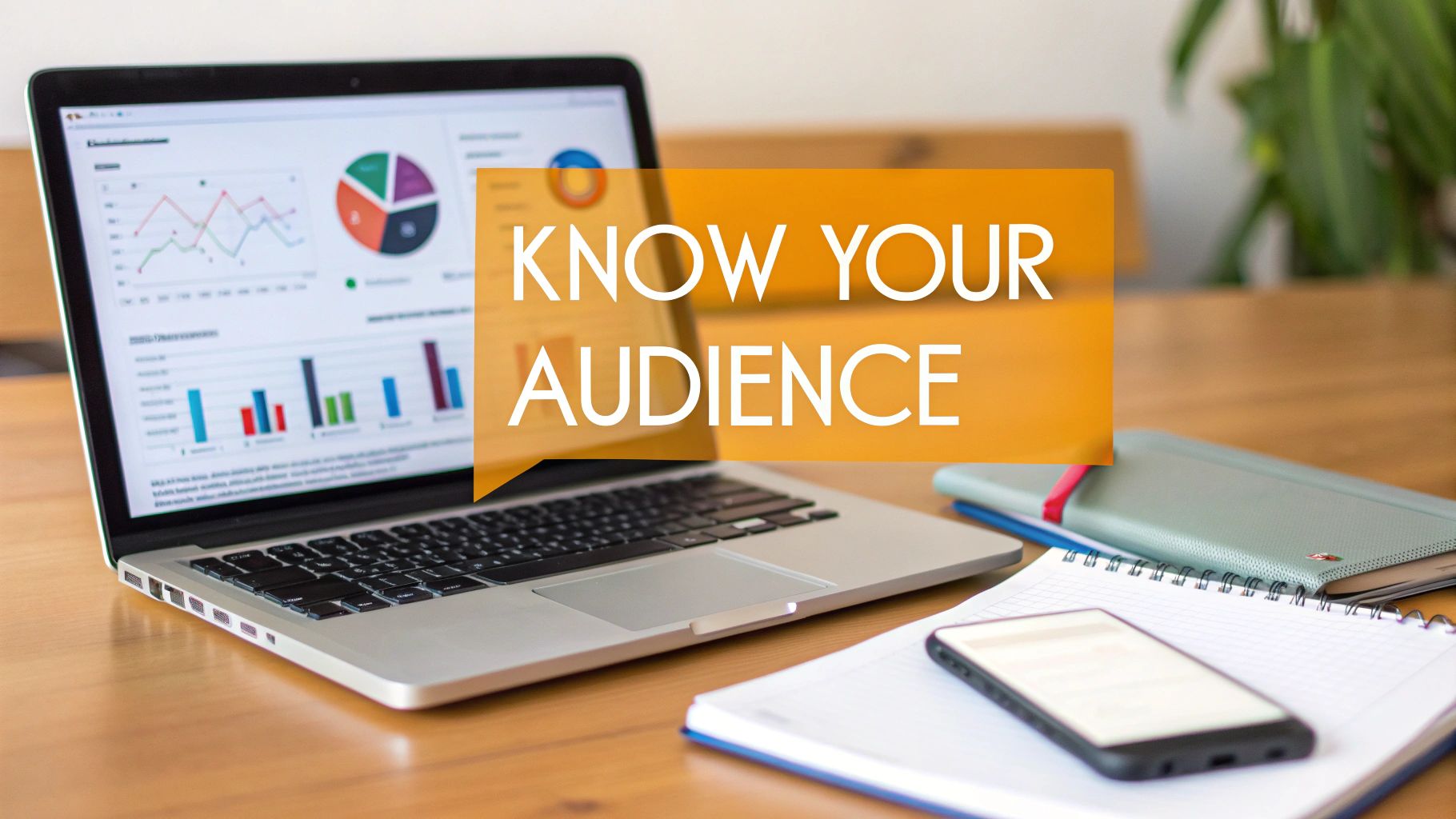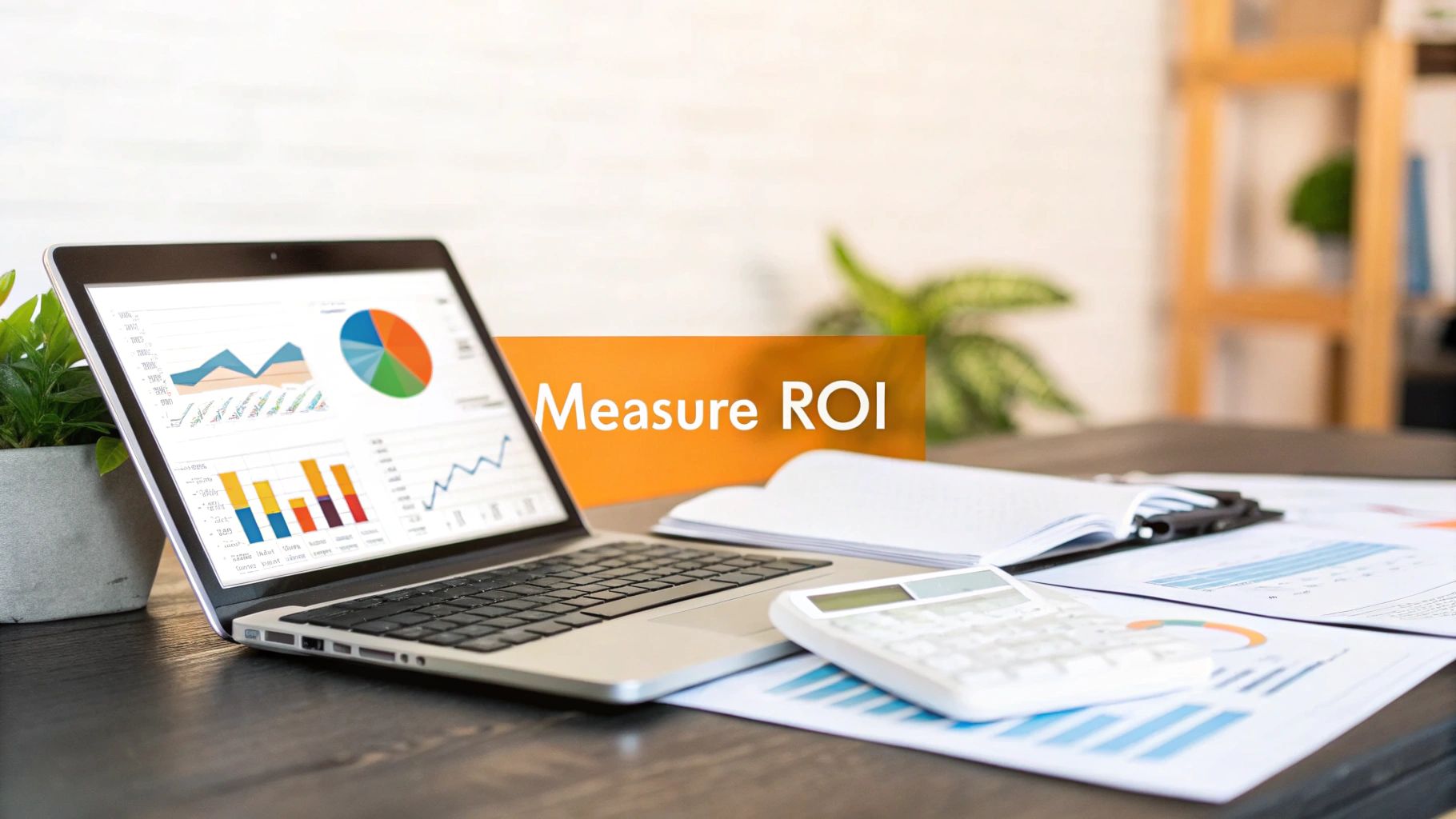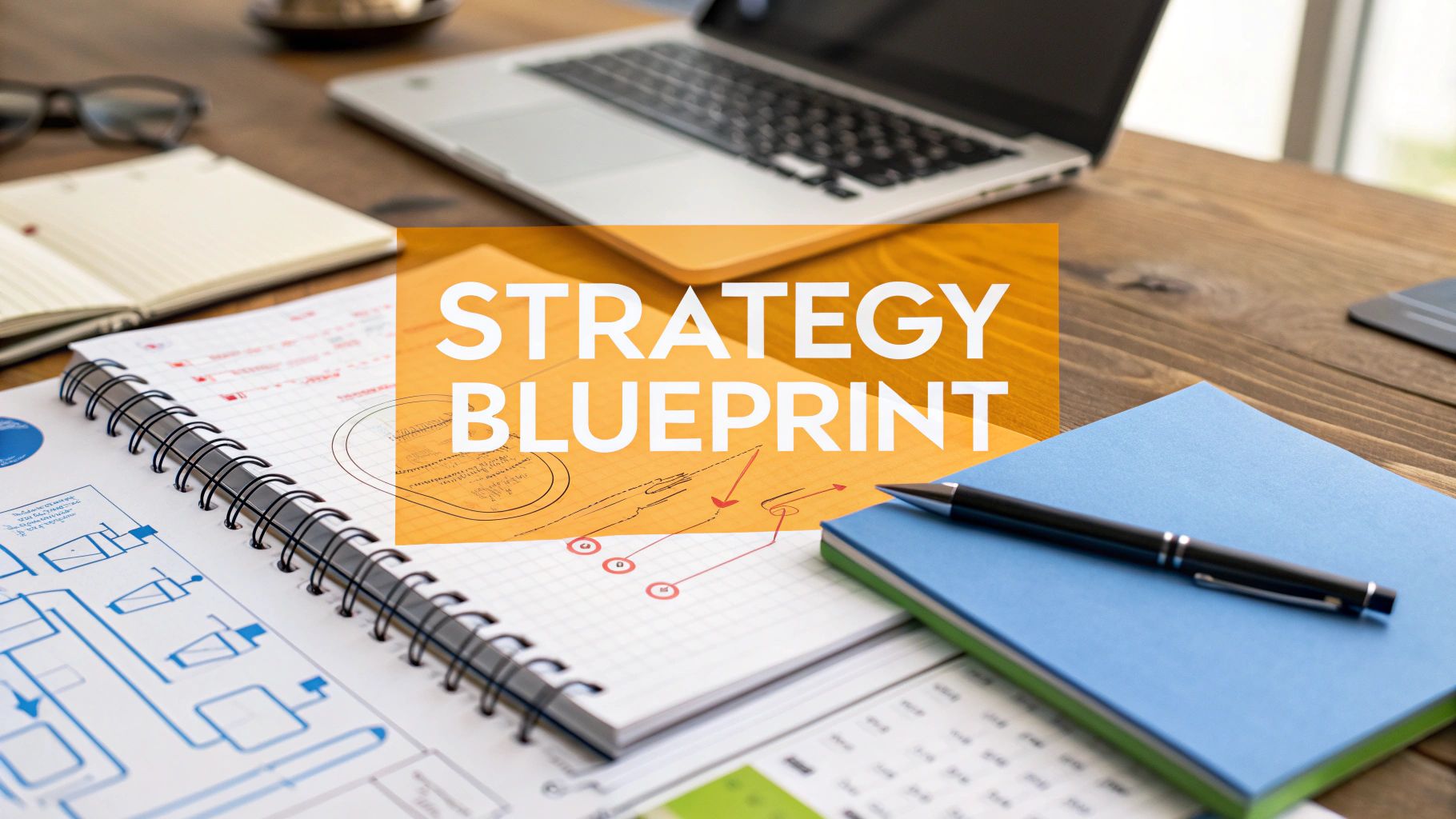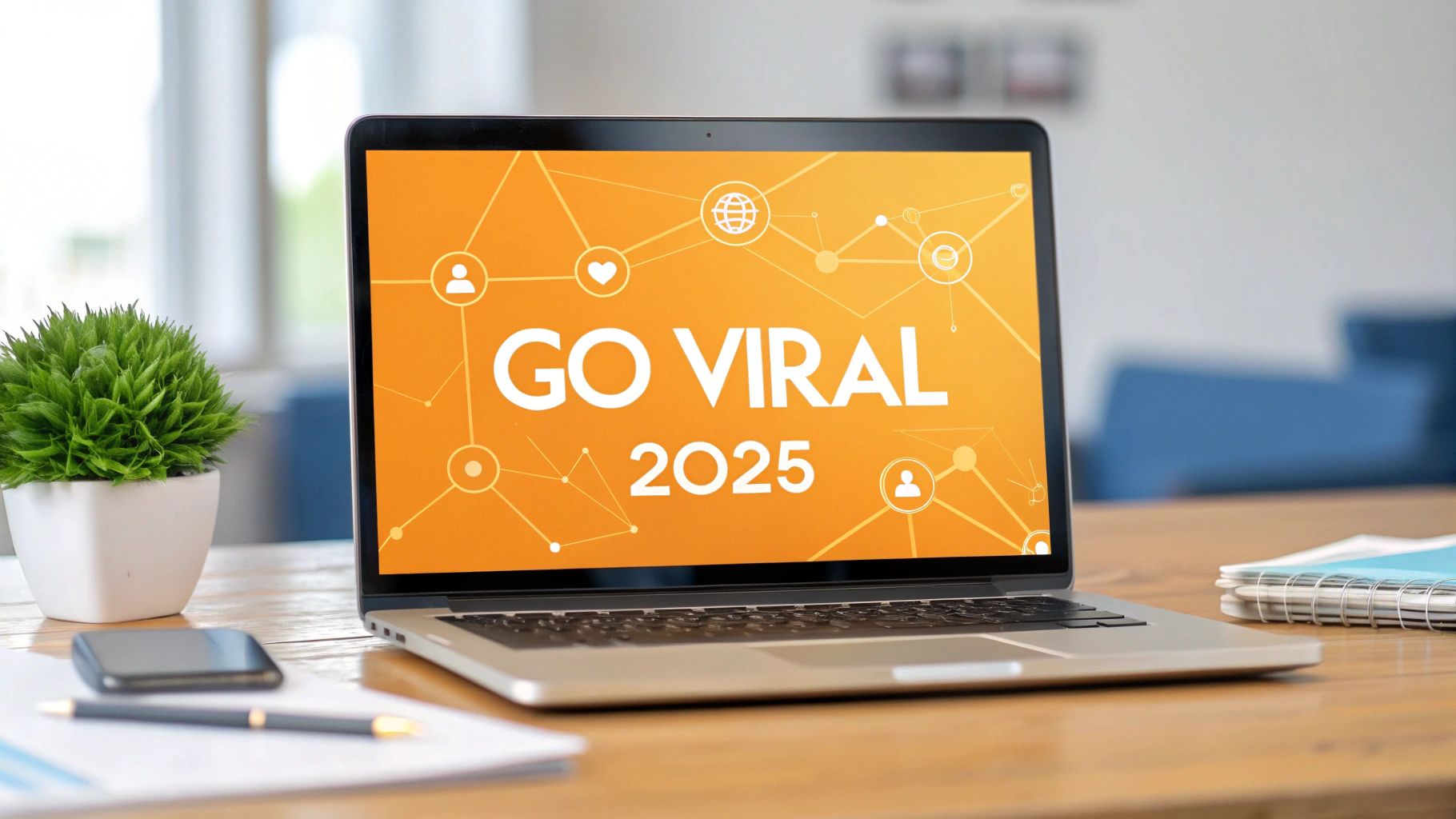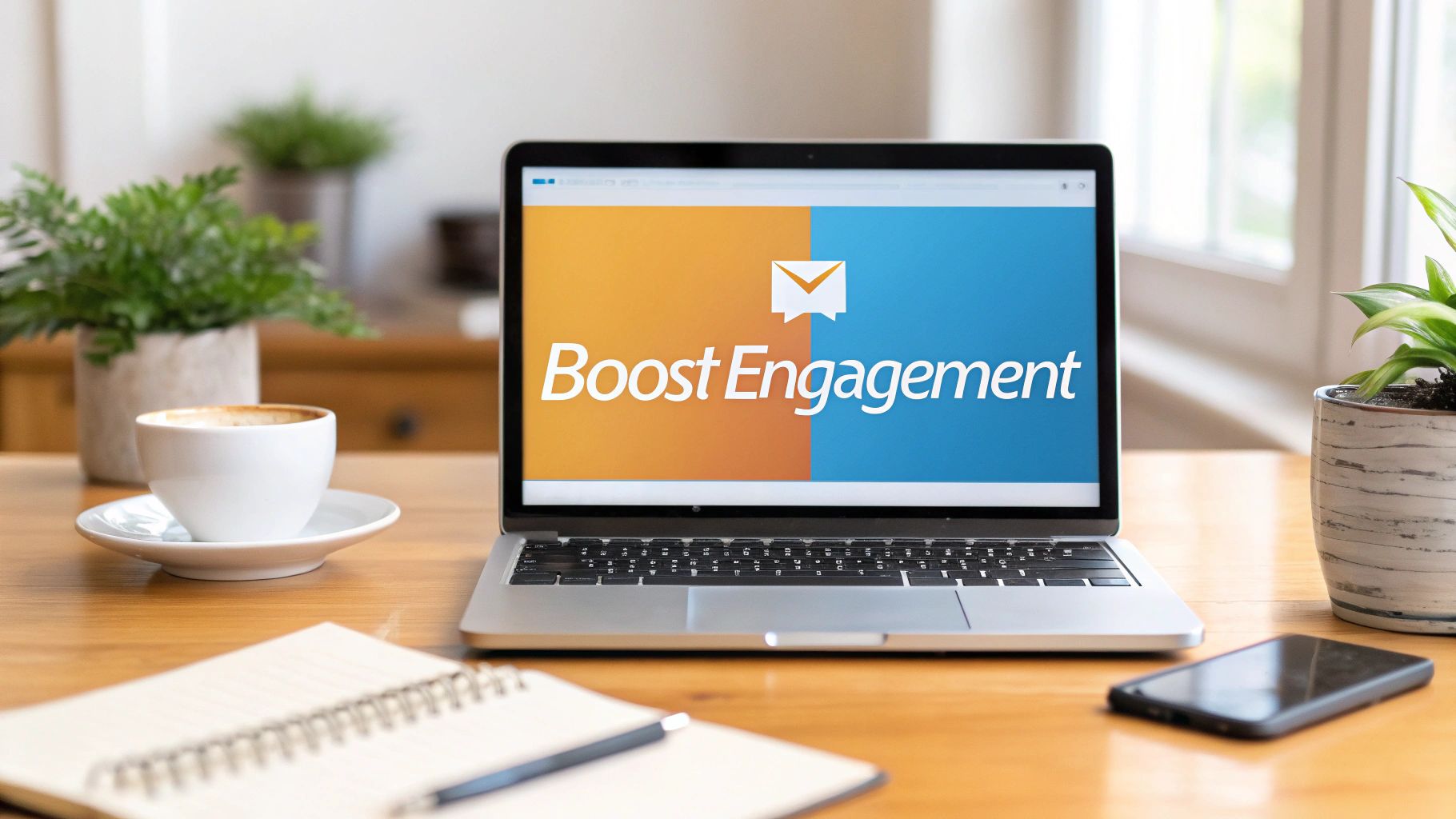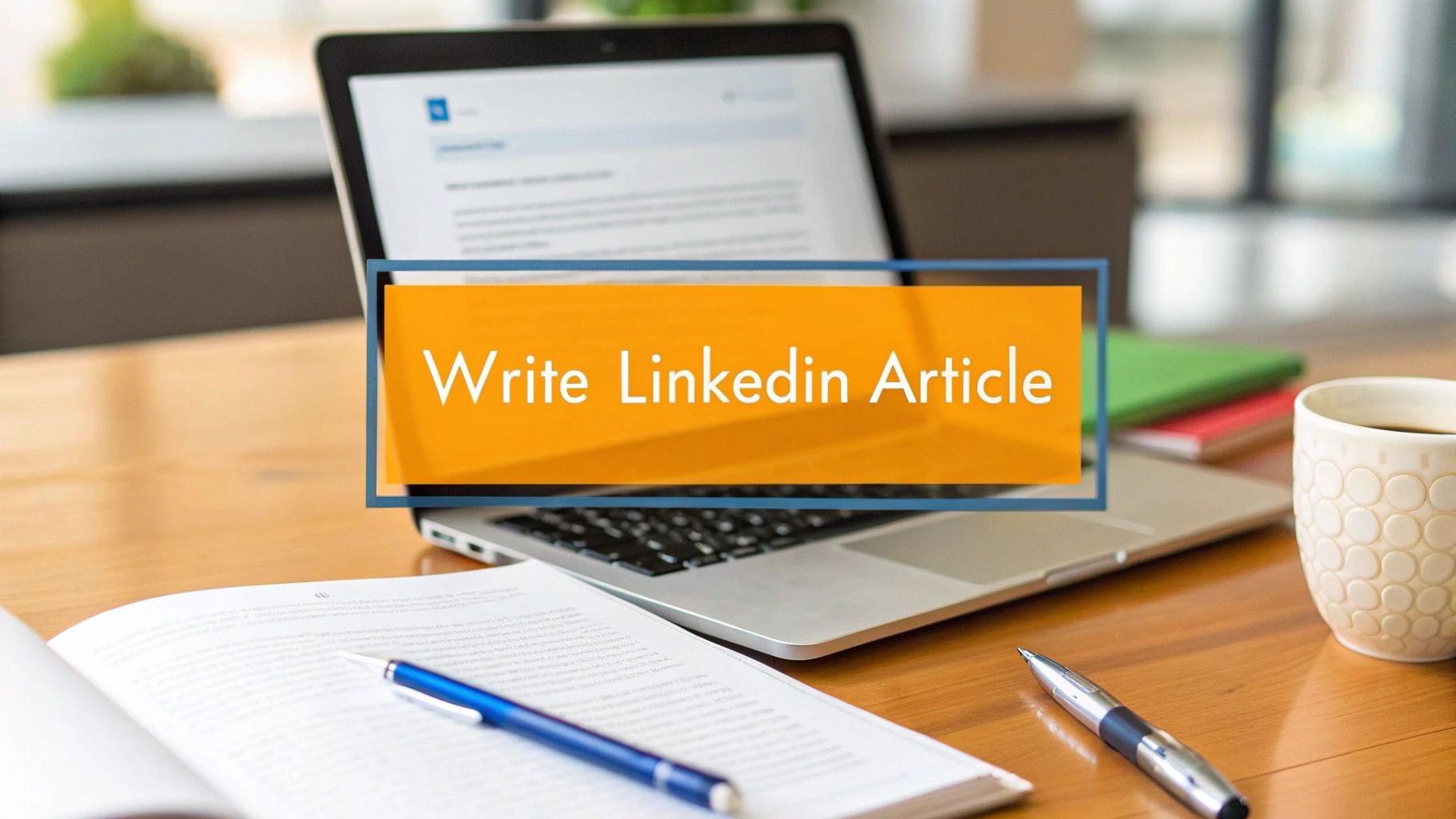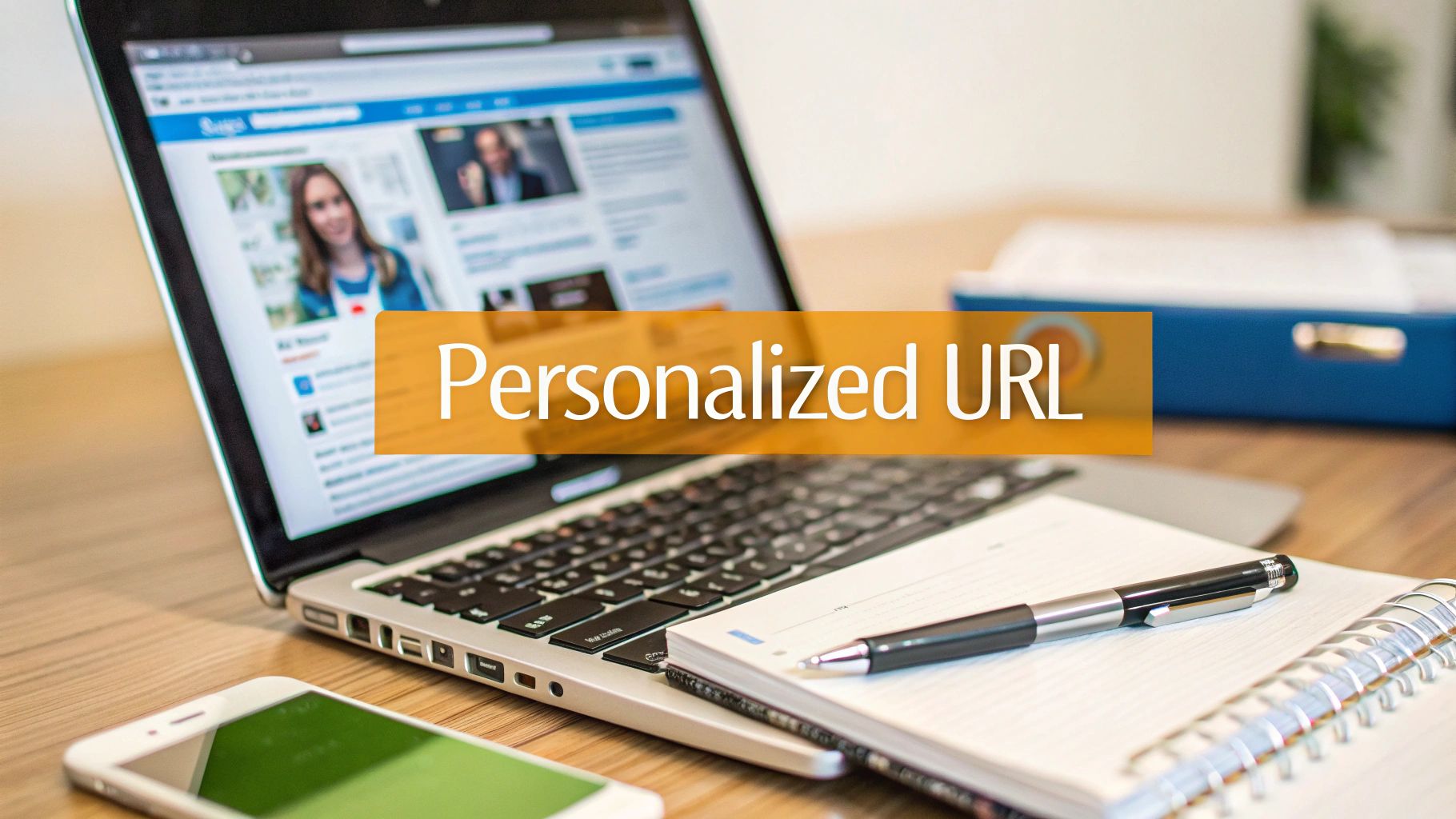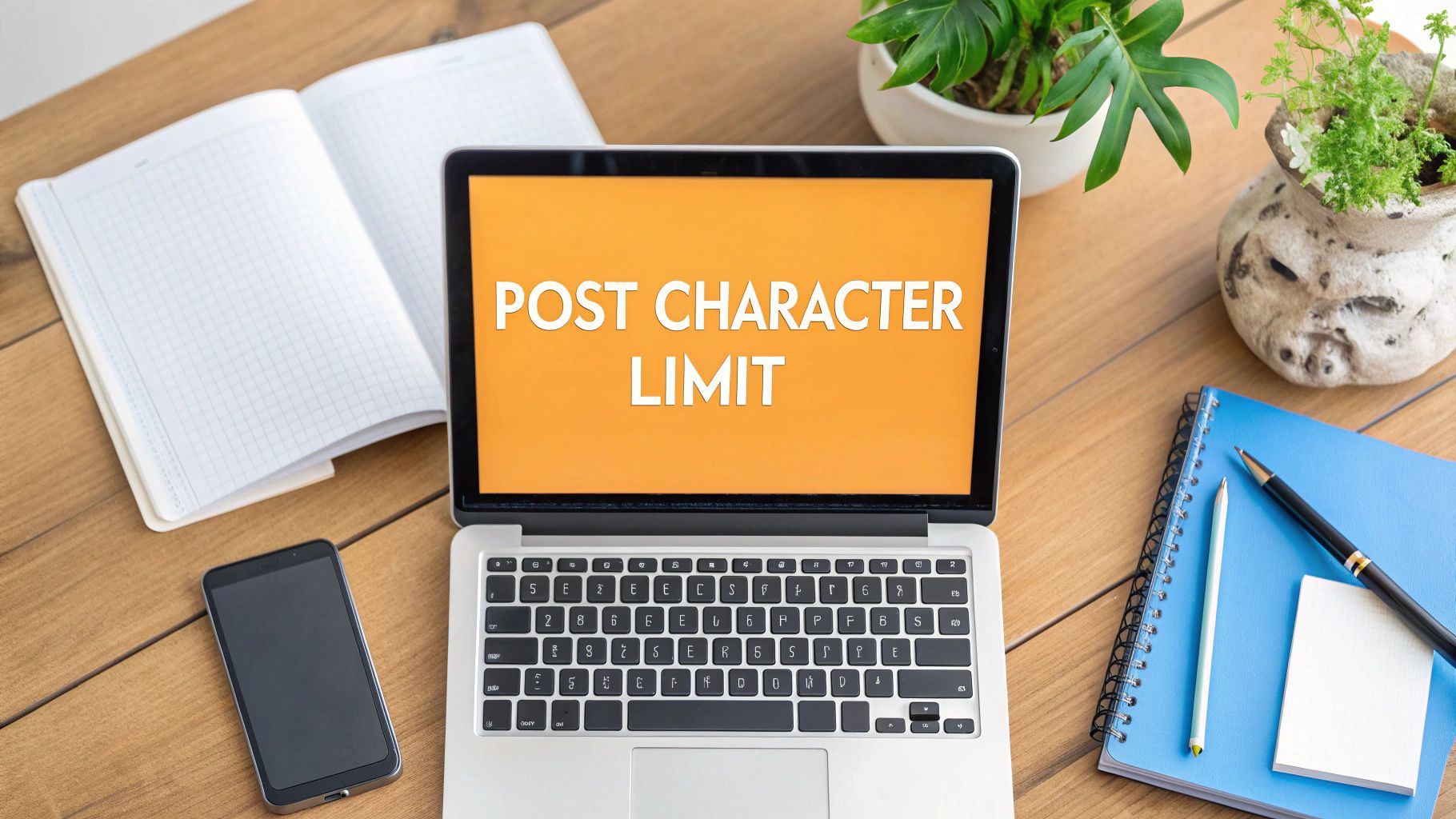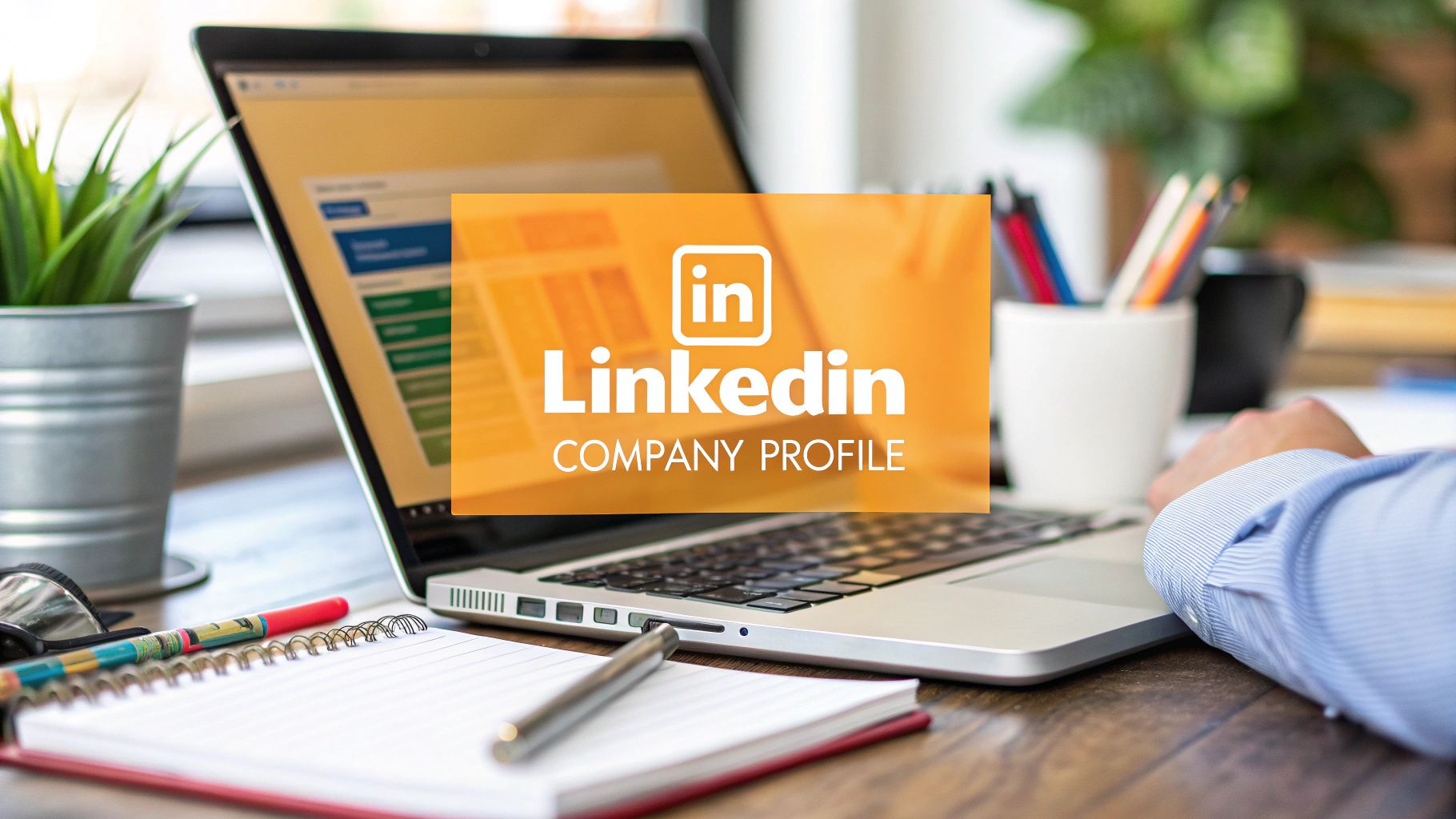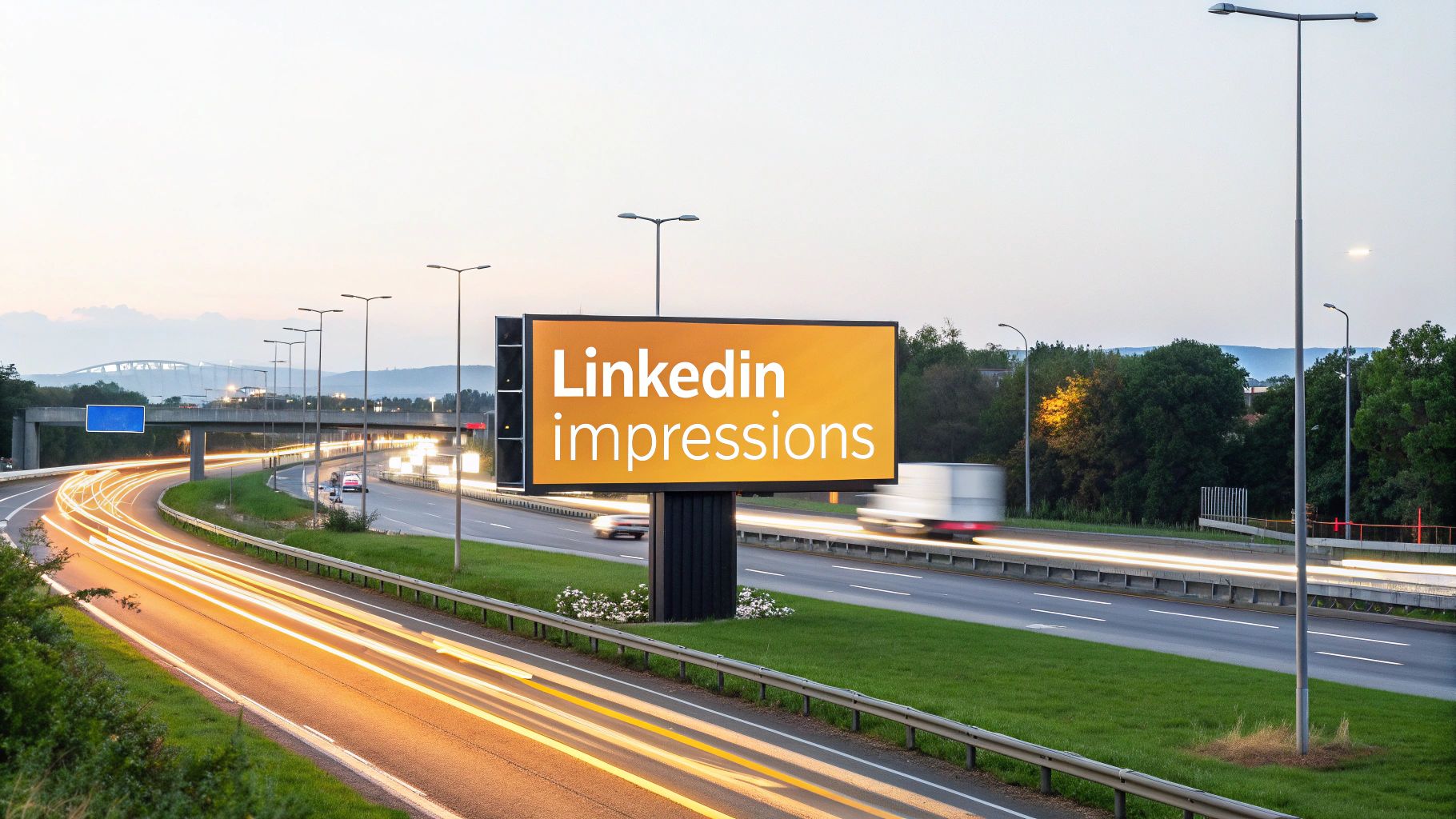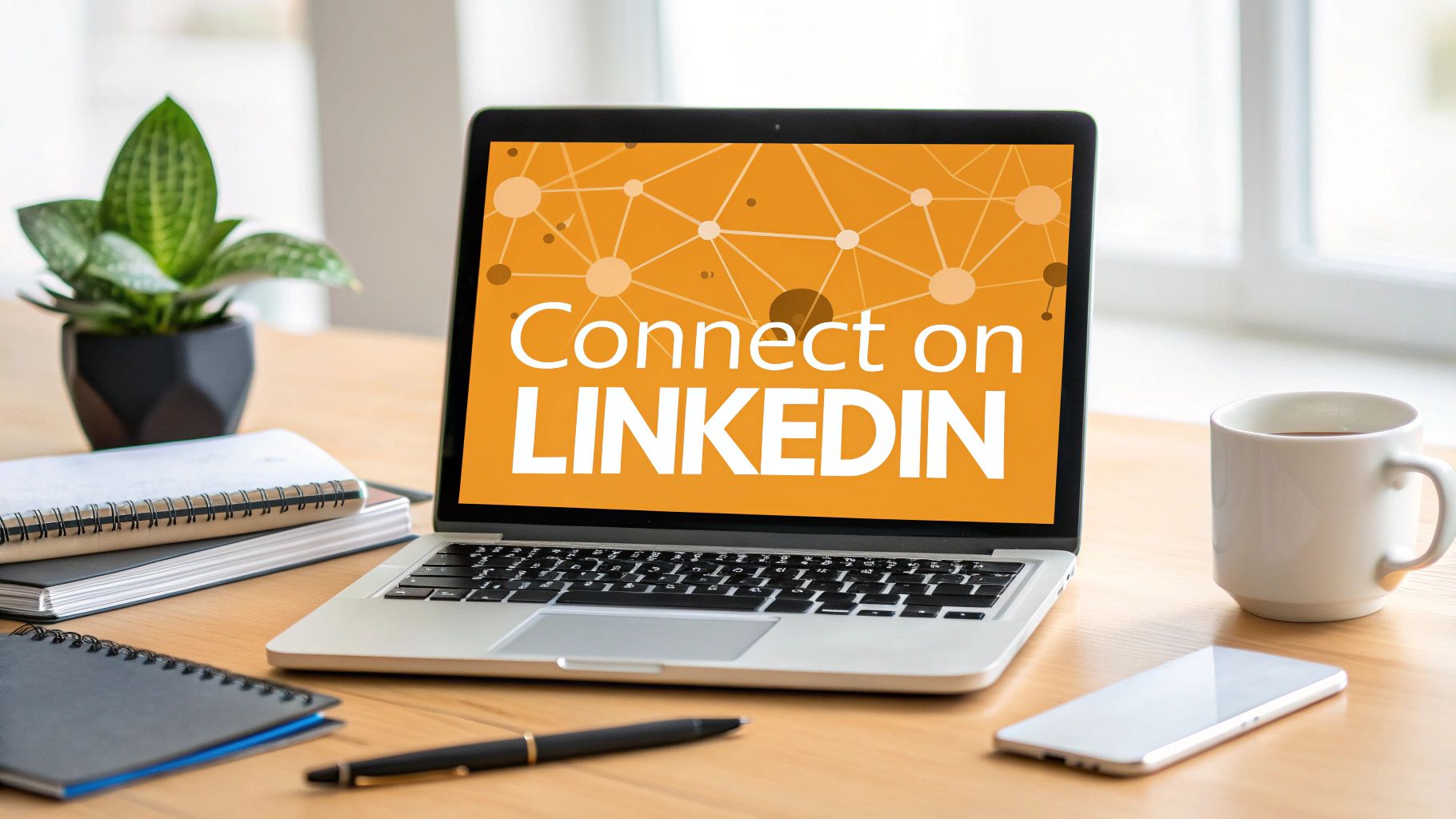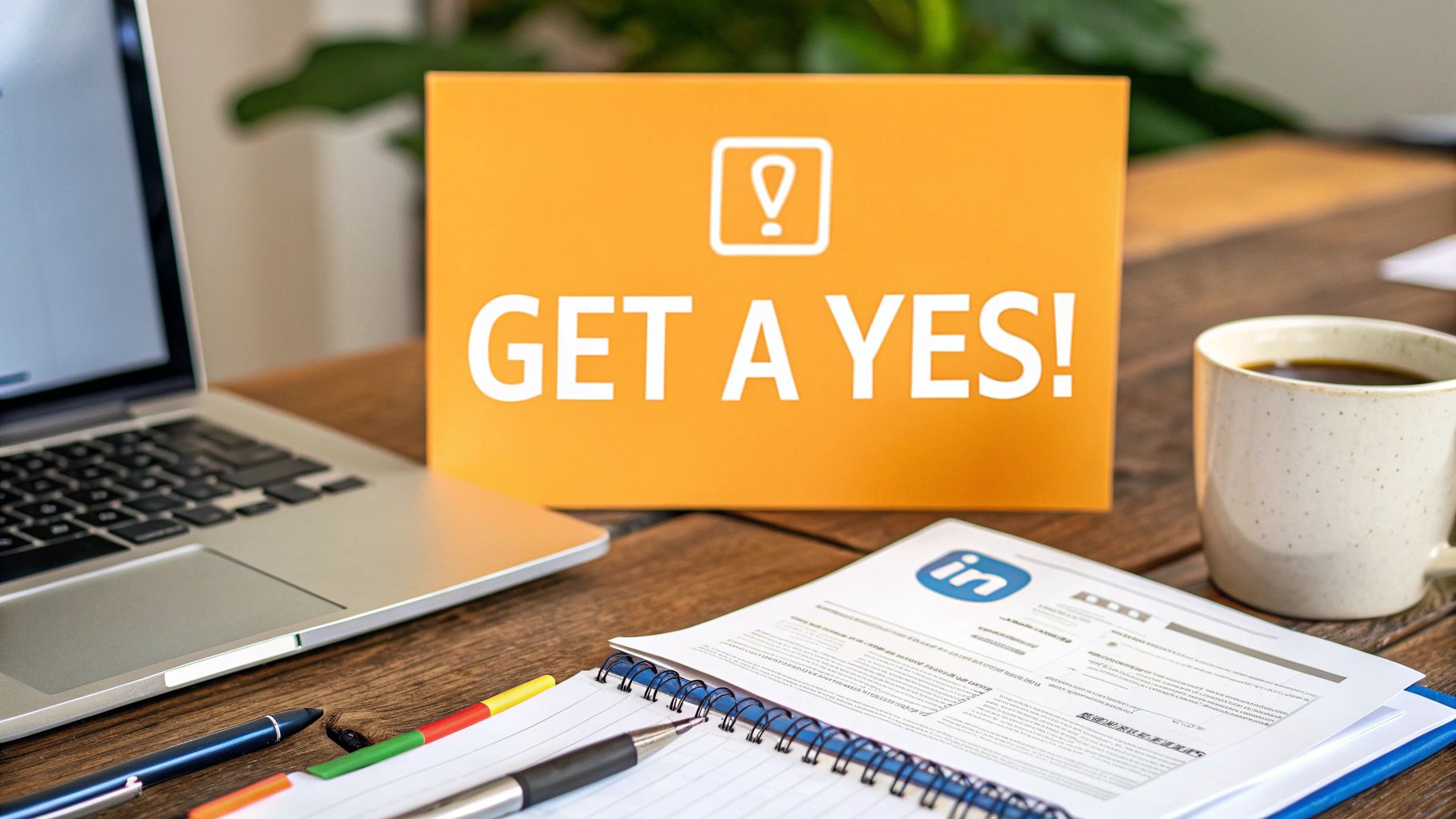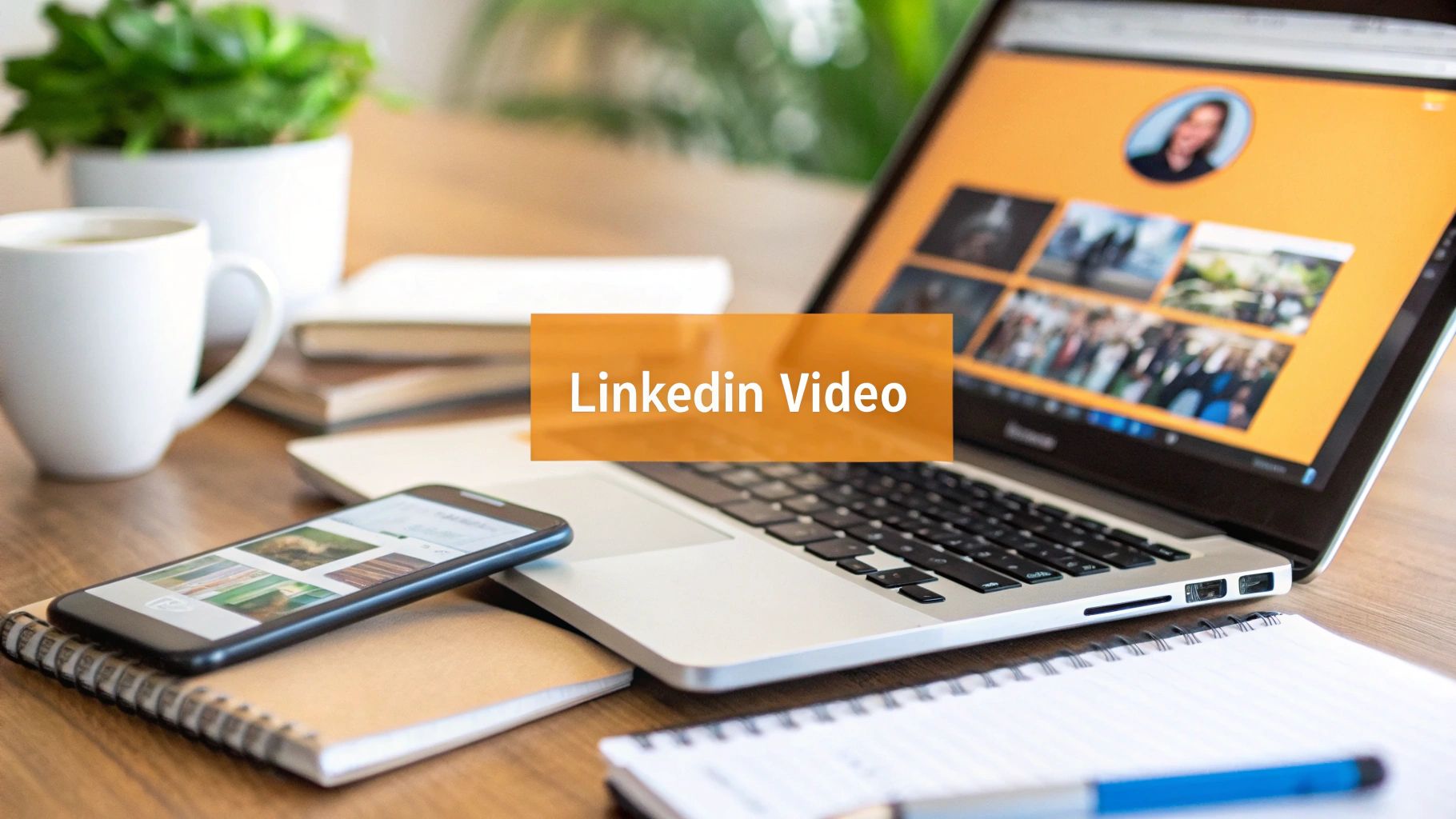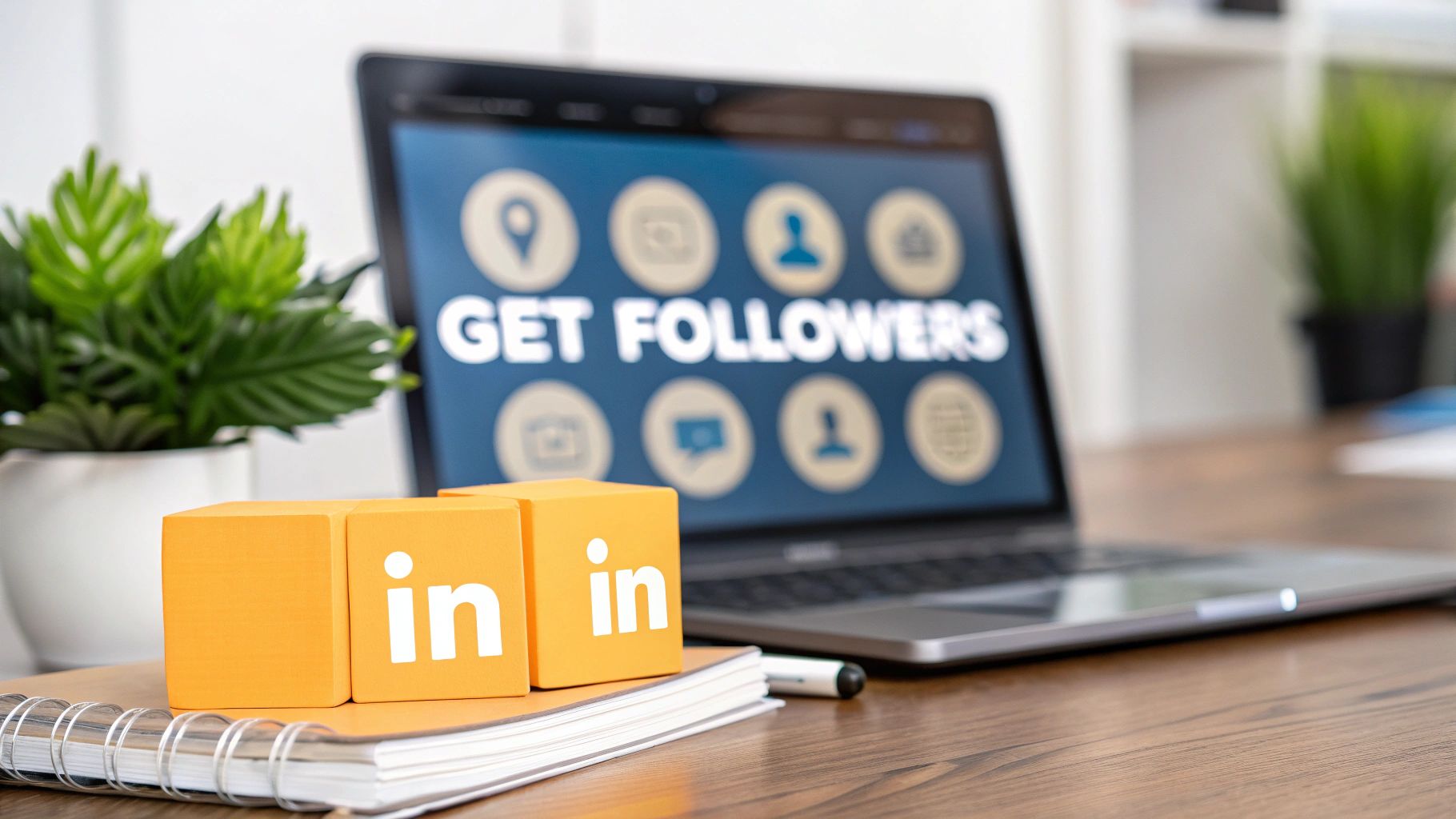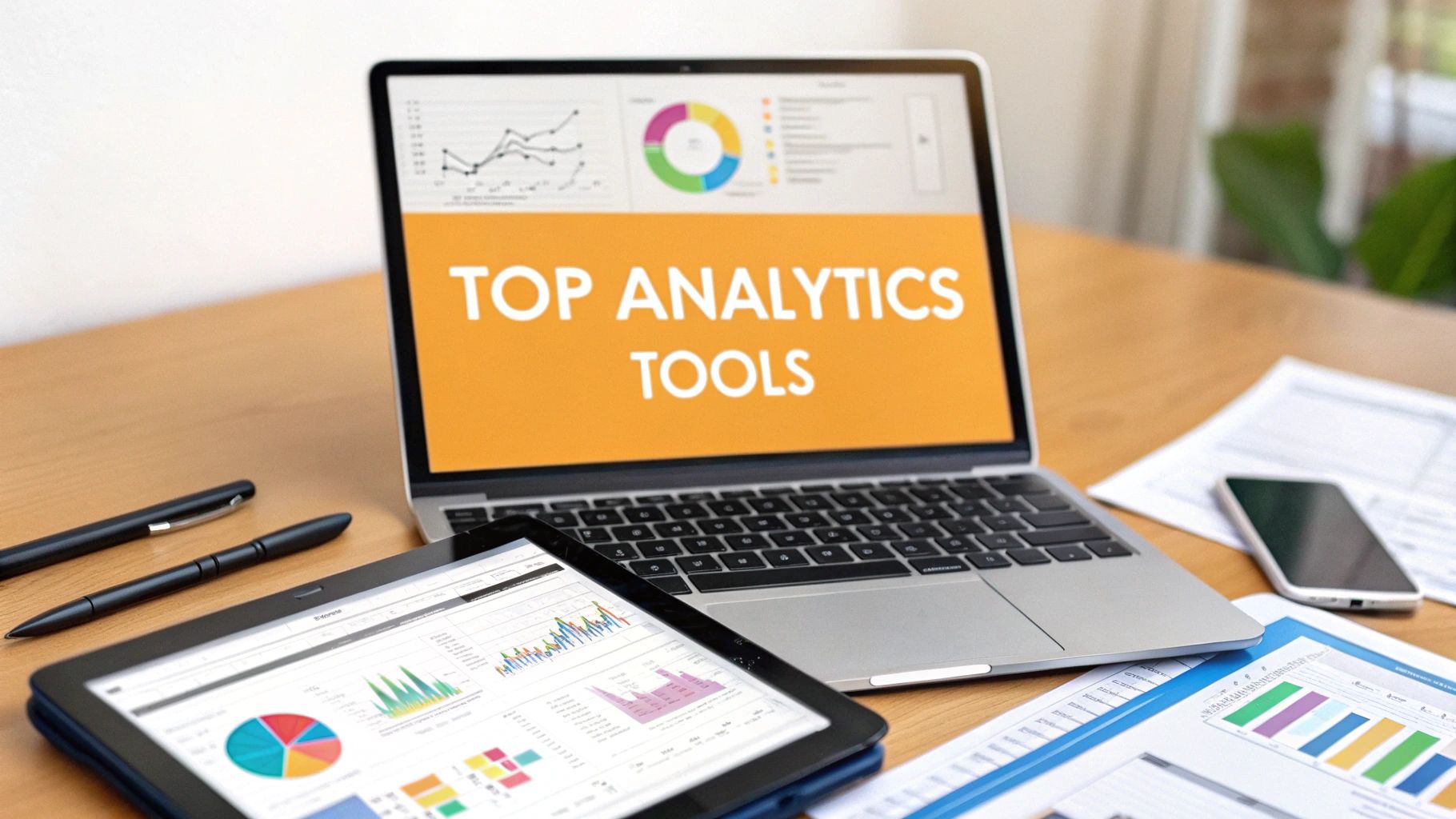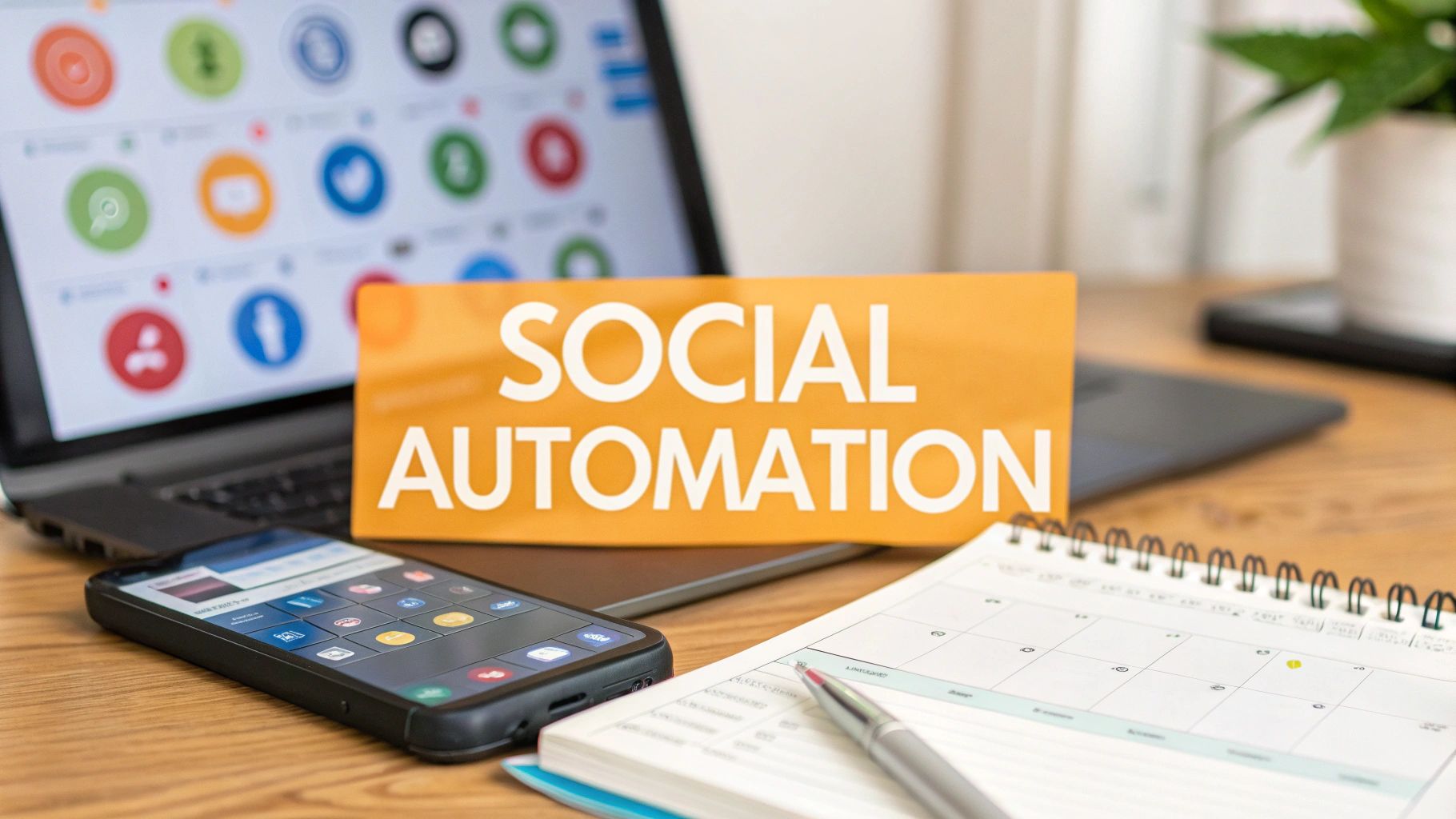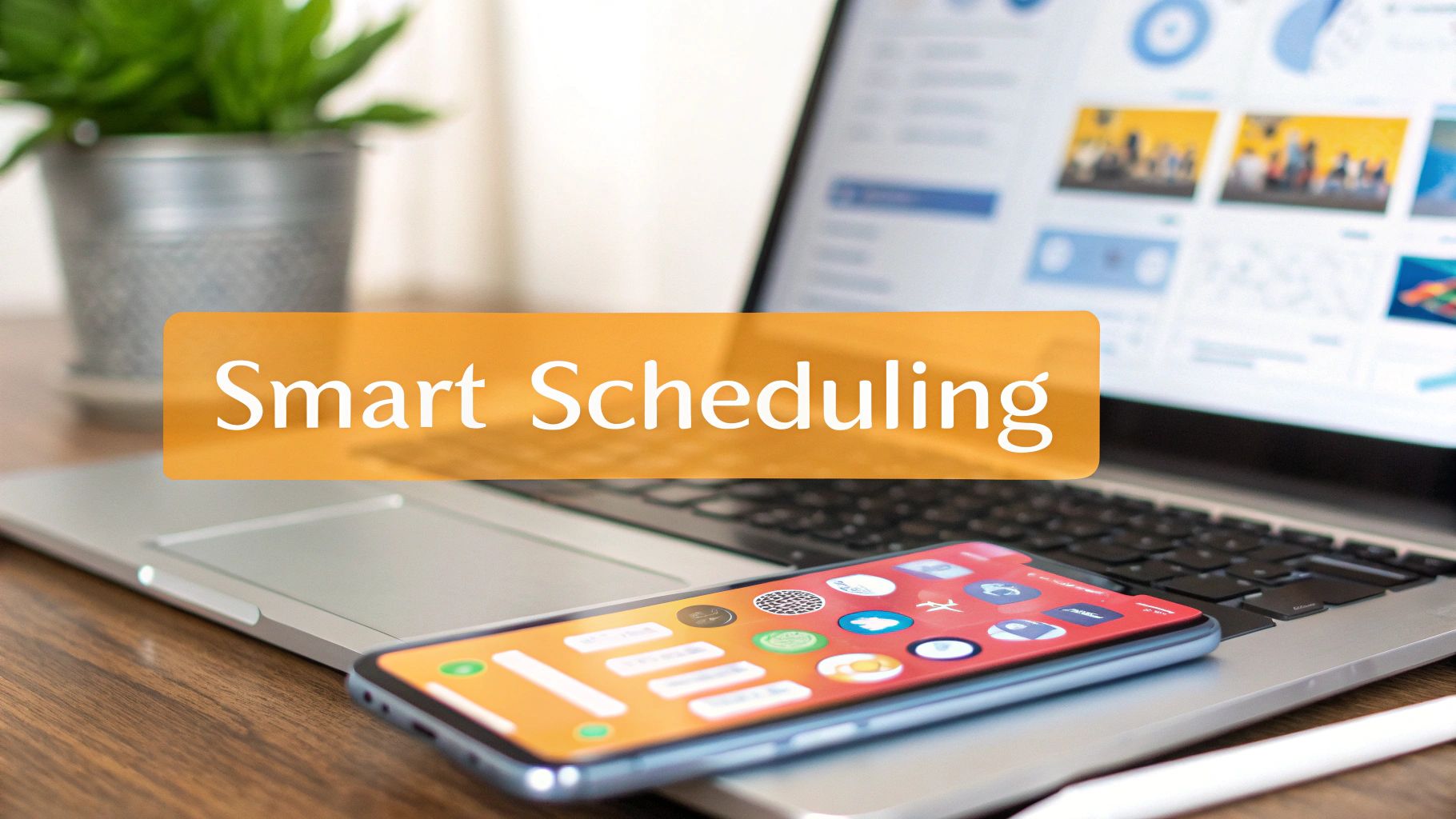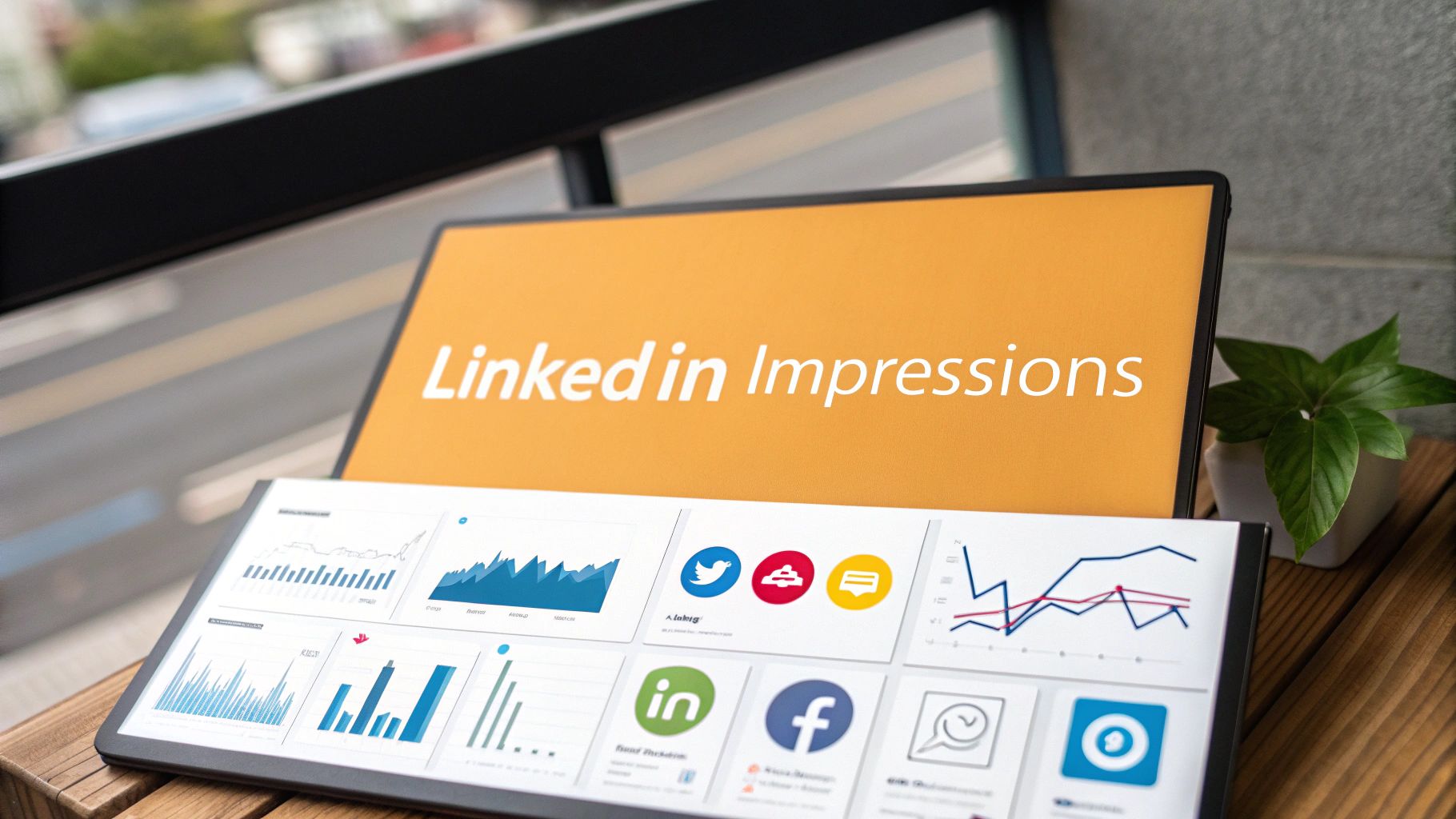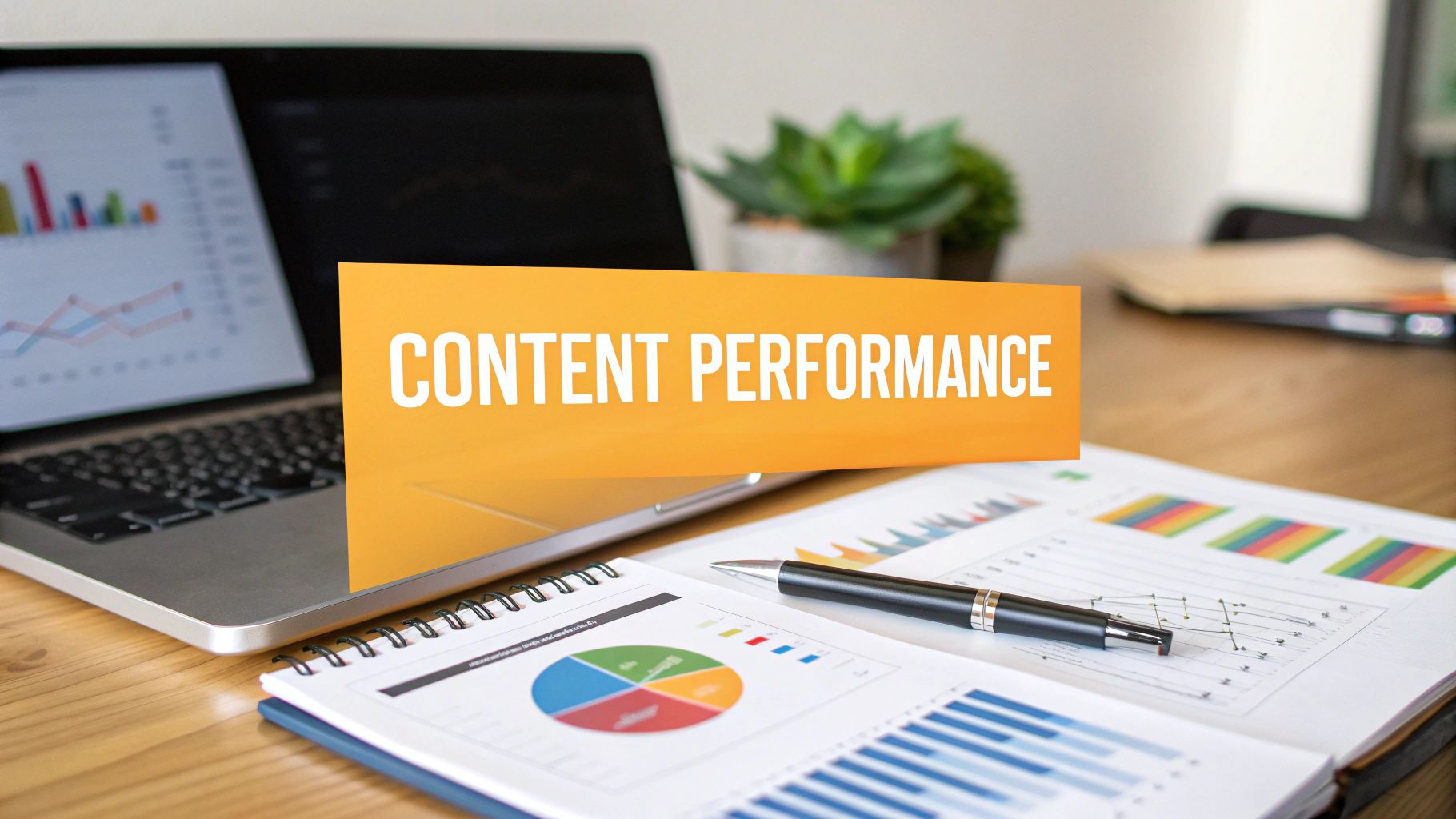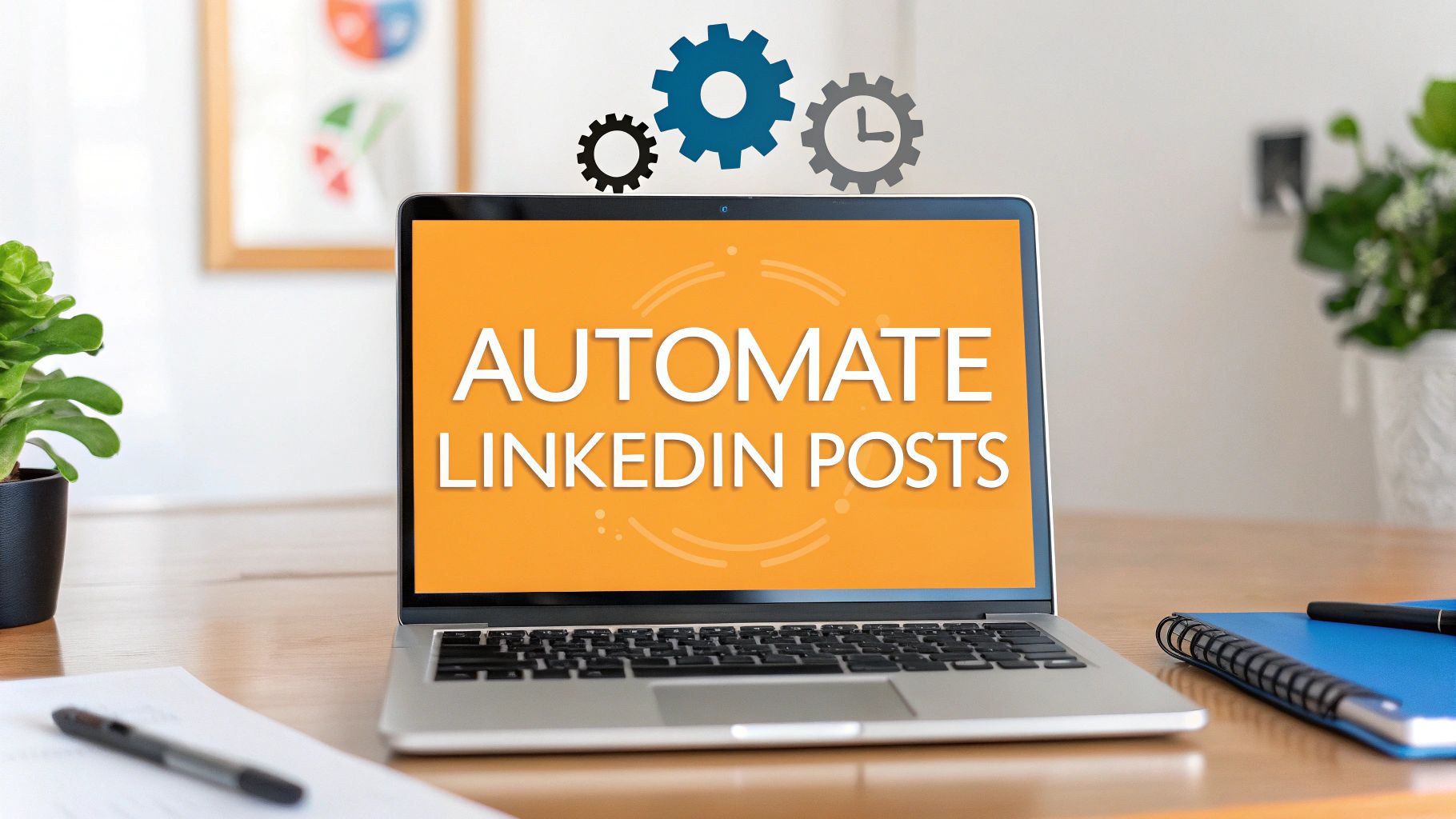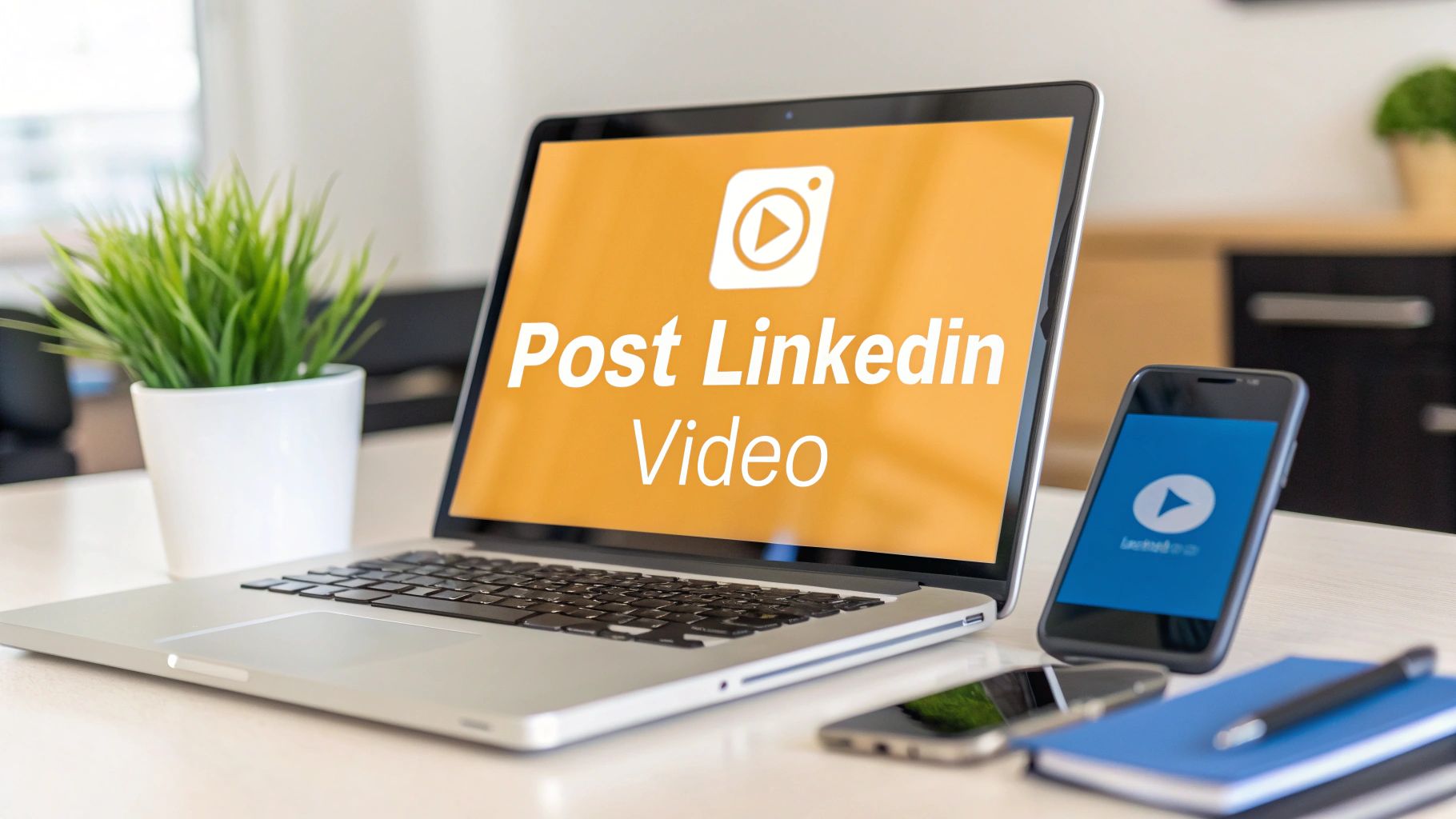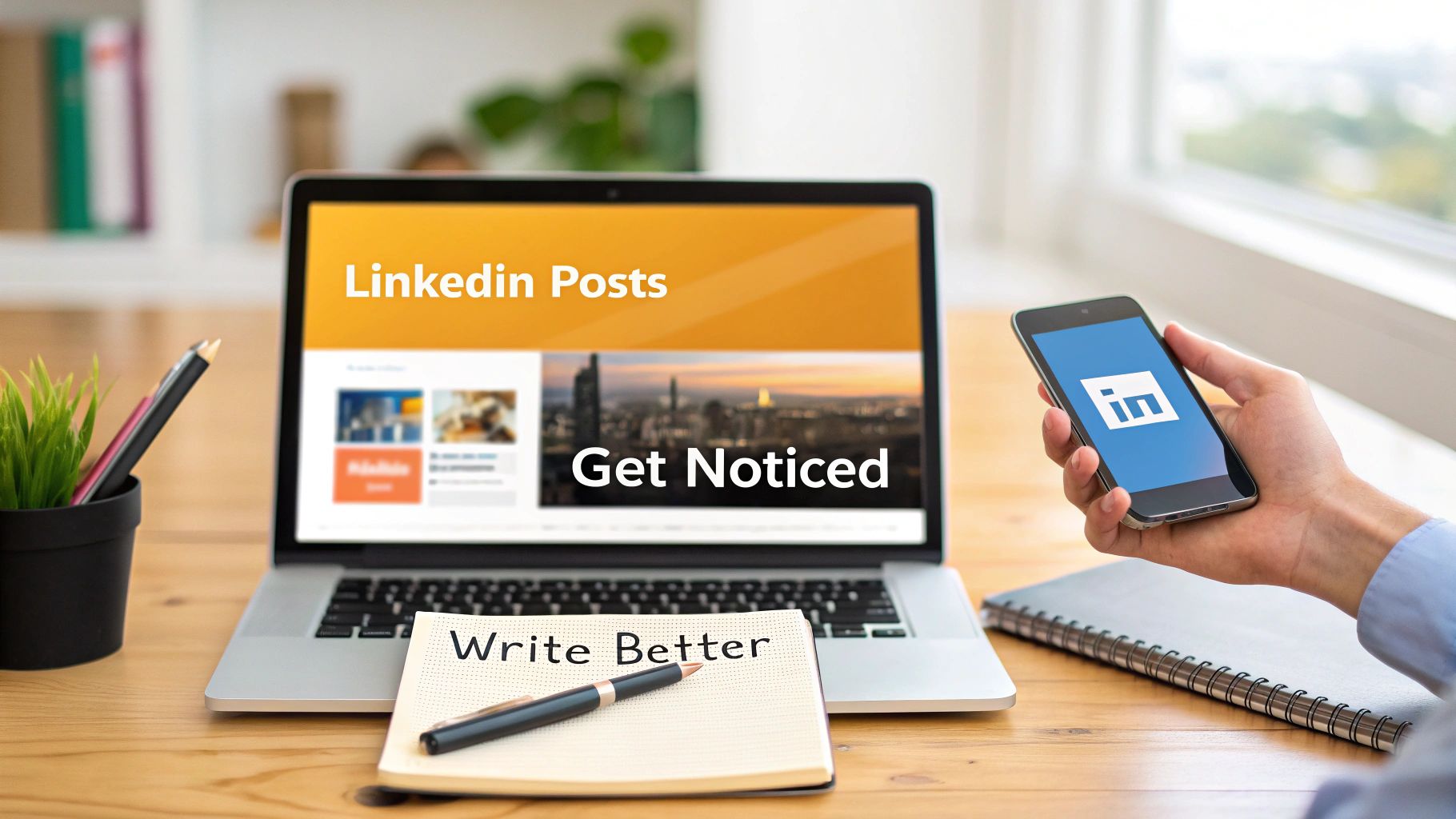Setting up a company profile on LinkedIn is surprisingly quick. You just log into your personal account, find the 'For Business' menu, and hit 'Create a Company Page'. After that, you'll pick your business type and punch in some basic info. Honestly, you can get the whole thing done in less than 15 minutes.
Why Your Business Needs a LinkedIn Page
Before we get into the nitty-gritty of how to set up the page, let’s talk about why it's so important. Think of your LinkedIn Company Page as more than just a digital placeholder; it's your brand's professional headquarters. This is where you tell your story, showcase your culture, and celebrate your wins.
A solid LinkedIn presence is one of the best ways to build a strong brand identity and actually get in front of the people who matter to your business.
Connect with a Global Professional Network
The sheer size of LinkedIn is a game-changer. When you create a company profile, you're plugging into a network of an incredible 1.2 billion global members (as of 2025). It’s the biggest professional hangout in the world, hands down.
This gives you a direct line to potential customers, partners, and the kind of top-tier talent you just can't find anywhere else. The best part? Everyone on the platform is there for business, so your content lands in front of an audience that's genuinely looking for industry insights. You can dig into more of the latest LinkedIn demographic insights on Sproutsocial.com.
A thoughtfully managed page doesn't just broadcast information—it starts conversations. It becomes the foundation for meaningful networking, effective marketing, and attracting the right people to your team.
Drive Credibility and Generate Leads
An active, polished LinkedIn page shows you’re a serious player. It’s your space to prove you know your stuff, share customer success stories, and put your company values on display. This kind of credibility is pure gold when it comes to generating high-quality leads.
- Establish Authority: When you consistently share valuable content and industry news, people start seeing your brand as a go-to leader.
- Attract Talent: It gives potential hires a real peek into your company culture, making it way easier to find people who genuinely fit.
- Boost Visibility: Every single post and interaction expands your reach. It’s a great way to learn what works and figure out how to improve your impressions on LinkedIn.
From scrappy startups to massive corporations, smart businesses are using their pages to build trust and fuel real growth.
Setting Up Your LinkedIn Company Page
Alright, let's get your brand’s new home built on LinkedIn. The initial setup is pretty straightforward, but a few smart choices here can make a huge difference down the road. It all starts with having a personal LinkedIn profile that’s at least a week old and has a handful of connections.
First, you'll log into your personal account and head over to the "For Business" menu in the top right corner. From there, just click "Create a Company Page." LinkedIn will then ask you to pick a page type that fits your organization—Company, Showcase Page, or Educational Institution. For most of us, Company is the way to go.
Filling In The Essential Details
Next up, you’ll be prompted to plug in your core business information. This is where you lay the foundation for how people will actually find and recognize you on the platform.
- Company Name: Keep it simple—use your official business name.
- LinkedIn Public URL: This is your page's custom web address. You want to make this clean and memorable, like
linkedin.com/company/your-brand-name. Try to avoid adding extra numbers or characters if you can. - Website: Link directly to your company's main website. No need to get fancy here.
- Industry, Company Size, and Company Type: Fill these out as accurately as possible. This helps LinkedIn categorize your page and, more importantly, show it to the right people.
This part is quick, but before you can officially launch, LinkedIn has a few prerequisites. This visual guide breaks down what you'll need.
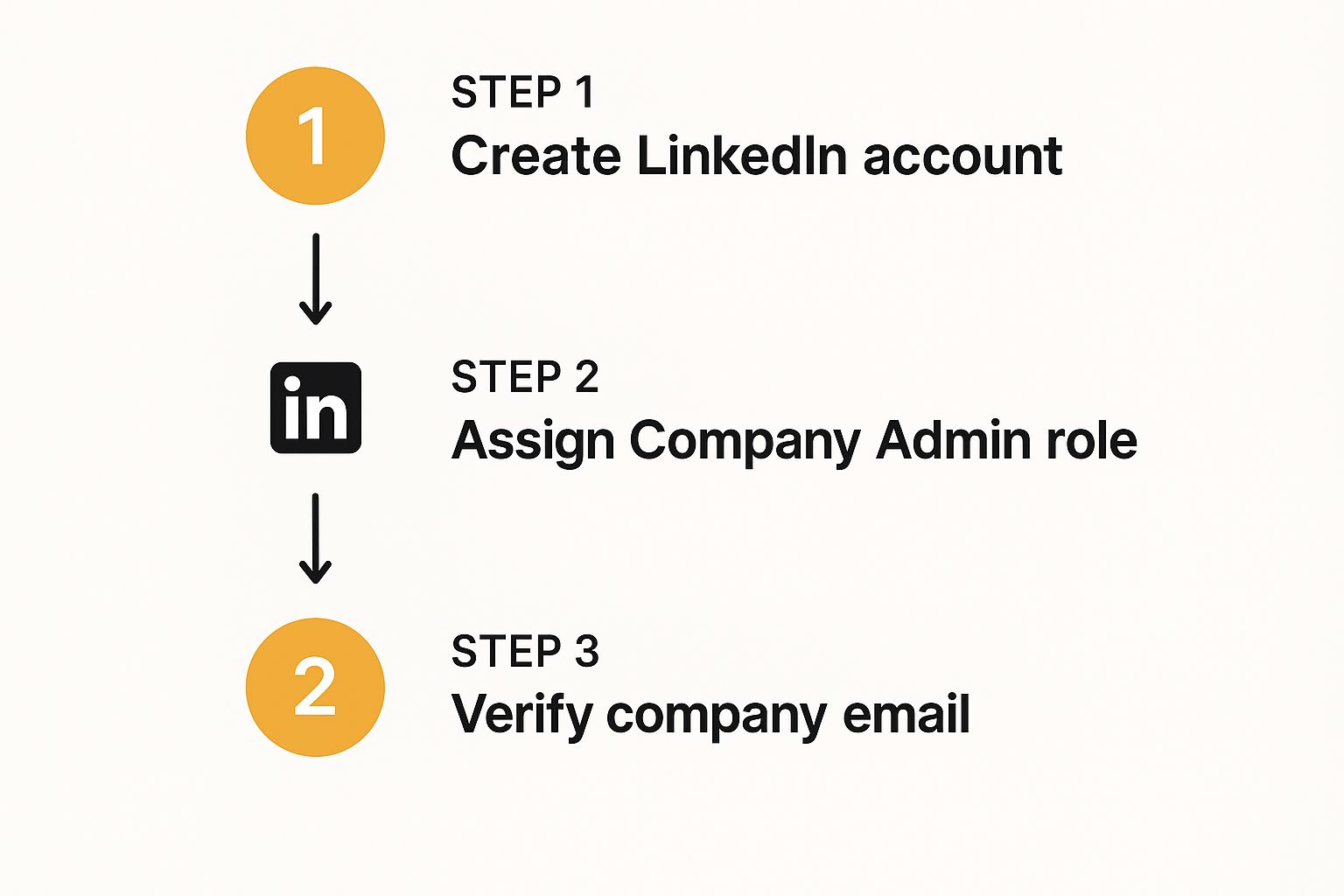
As you can see, having an active personal account with a verified email is non-negotiable.
Making a Strong First Impression
Once you've entered these details, you'll land on the main page creation screen. This is where you'll upload your logo and add a tagline—your first real chance to make an impression. It's also a great time to start thinking about creating an attractive LinkedIn banner that visually tells your story.
Don't forget this key stat: companies with complete profiles get 30% more weekly views. Filling out every field isn't just about looking professional; it’s about making sure your page actually shows up when people are searching for what you do.
After you check the verification box confirming you're an authorized representative, go ahead and click "Create page." And just like that, your LinkedIn Company Page is officially live! Now, the real fun begins: optimizing it to attract the right audience.
Making Your Page Work for You: Optimization Tips
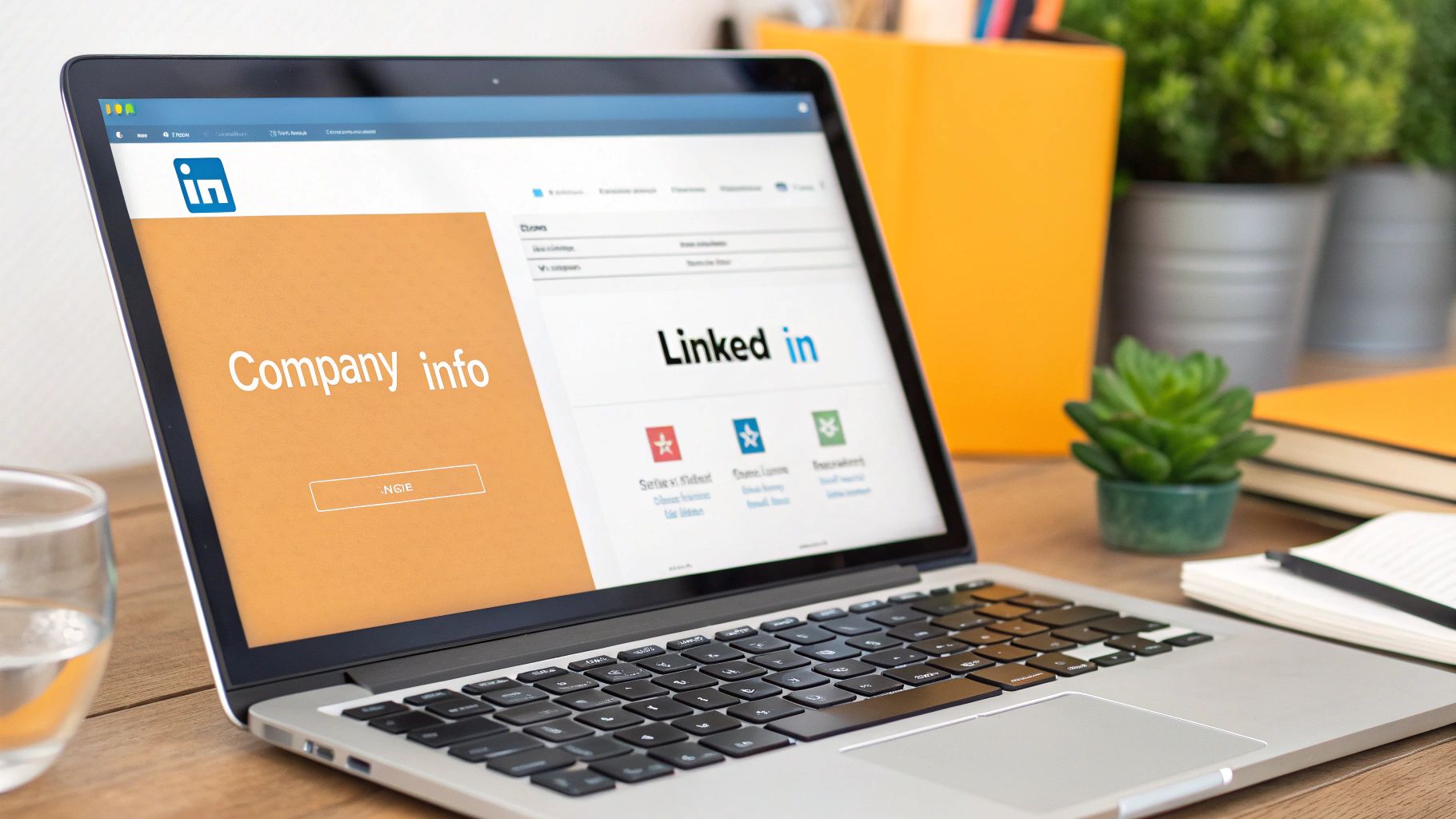
Okay, so your page is officially live. That’s a great first step, but a basic page is just a starting point. Now, let's get into the good stuff—turning that page into a magnet for potential clients, partners, and future employees.
Getting this right matters. Pages with fully completed profiles get 30% more weekly views. That’s not a small number. Think of your page as a story; every single section is a chance to draw people in and make them want to learn more.
Nail Your Brand Story
Your "About" section is your digital elevator pitch. This is where you move beyond just listing services and start telling a real story. Who are you? What specific problems do you solve for your customers? What makes you different from everyone else? Write it like you’re talking to a real person.
This is also prime real estate for keywords. Sprinkle in the terms your ideal customer would use to find a company like yours. A well-crafted summary doesn't just inform; it helps you show up when it counts—both on LinkedIn and in Google searches.
Don't just spit out a mission statement. Let your company's personality come through. Are you a bold disruptor? A supportive, collaborative partner? Your tone here will attract people who genuinely click with your culture.
Get Your Visuals Right
People process images way faster than text, which makes your logo and cover photo incredibly important. They're the first thing anyone sees, so they need to look sharp and professional. Your logo should be a high-quality file that’s instantly recognizable.
The cover photo is where you can have a little more fun. Show off your team, feature a new product, or create a graphic that highlights your core values. Whatever you do, don't just slap a generic stock photo there. It’s a huge missed opportunity. Getting the sizing just right is key to looking polished; for the latest specs, our guide on LinkedIn image sizes has you covered.
Don't Skip the Details
LinkedIn gives you a ton of smaller fields to fill out, and they all add up to build a more credible, complete profile. Taking a few extra minutes here can make a big difference.
- Custom Button: Use this to add a clear call-to-action (CTA). Something like "Visit website" or "Contact us" gives people a clear next step and helps you drive traffic where you want it to go.
- Location: If you have multiple offices, add them all. This helps you pop up in local searches and connect with people in those specific communities.
- Hashtags: You can add up to three hashtags to define your page's focus. This helps LinkedIn understand what you’re about and show your content to users interested in those topics.
To help you keep track, here's a quick cheat sheet for the most important parts of your page.
Key Profile Elements and Optimization Tips
| Profile Section | What to Include | Pro Tip |
|---|---|---|
| Logo & Cover Photo | High-resolution, on-brand images that are sized correctly. | Use the cover photo to showcase company culture, products, or your value proposition. |
| About Summary | A compelling brand story, key services, and relevant keywords. | Write in a natural, conversational tone. Let your company's personality shine. |
| Custom Button (CTA) | A direct call-to-action like "Visit website," "Learn more," or "Contact us." | Align the button with your primary business goal for the page (e.g., lead gen, traffic). |
| Hashtags | Up to 3 relevant hashtags that represent your core topics and industry. | Choose hashtags with a healthy following but avoid ones that are overly broad. |
| Location | All physical office locations. | Adding multiple locations increases your visibility in "near me" and local searches. |
By taking the time to optimize every single one of these elements, you’re not just filling out a form. You’re building a powerful, strategic asset for your business that works for you around the clock.
Building Your Audience and Engagement
Alright, your LinkedIn page is live and looking sharp. But here's the thing: a great-looking profile is just the starting point. Now, we need to get some eyeballs on it and start building a real community.
The most powerful asset you have right from the get-go isn't some fancy ad budget. It's your own team.
Seriously, your employees are your best (and most believable) brand ambassadors. Get them to connect their personal profiles to the company page and encourage them to share the content you post. This isn't just a "nice to have"—it's a massive lever for growth.
Think about it: a mind-boggling 30% of all engagement on company posts comes directly from employees. Plus, they are a whopping 14 times more likely to share content from their own company than any other type of content. If you're a data nerd like me, you can dig into more LinkedIn statistics on Wavecnct.com to see just how big the impact is.
Crafting Content That Connects
Once you've got your internal team ready to amplify your message, you need to give them something worth sharing. This means ditching the sterile corporate-speak. The posts that really take off on LinkedIn are the ones that offer genuine value and feel human.
Not sure where to start? Try mixing in a few of these proven formats:
- Valuable Industry Insights: Find an interesting article, share some new data, or just give your own two cents on a trend you're seeing. This is how you position your brand as a go-to expert.
- Company News and Milestones: Did you launch something new? Win an award? Hit a big goal? Share it! People love a good success story, and it shows you’ve got momentum.
- Employee Spotlights: Put a face to the name. Feature a team member and tell a little bit of their story. It’s a fantastic way to humanize your brand and show off your company culture.
Finding Your Posting Rhythm
Consistency really is the secret sauce here. You want to stay on people's radar without spamming their feeds.
A good starting point is to post 3-5 times per week.
Keep a close eye on your LinkedIn Analytics. It will tell you exactly which days and times your audience is most active. Use that data to tweak your schedule and post when people are most likely to see and engage with your content.
Turning your page from a static brochure into a lively hub doesn't happen overnight. But by empowering your team and consistently sharing great stuff, you're already on the right track. For more advanced strategies, check out our complete guide on how to get followers on LinkedIn.
Taking Your LinkedIn Page to the Next Level

Alright, you've nailed the basics of creating your company page. Now it's time for the fun part—using the tools that really make a page stand out and connect with people on a whole new level. Moving beyond just posting updates is where the magic happens.
One of my favorite underused tools is the Showcase Page. Think of it as a specialized hub for a specific part of your business. Let's say you're a big tech company; you could create a Showcase Page just for your annual developer conference. It's a brilliant way to build a targeted community around a single product line, brand, or major initiative without cluttering up your main feed.
Pulling Back the Curtain on Your Culture and Events
If you're trying to attract top-tier talent, the Life tab is an absolute game-changer. This is where you get to show off what it’s really like to work at your company. Share employee stories, behind-the-scenes photos, and videos. It stops your page from feeling like a faceless corporation and turns it into a place where real people work.
And don't forget about LinkedIn Events. They are fantastic for getting your community involved in real time. You can host all sorts of things:
- Webinars to launch a new product
- Live Q&A sessions with your CEO or leadership team
- Virtual meetups for networking
By leaning into these more advanced features, you're not just adding to the noise. You’re giving people specialized content and a genuine peek into your world, and that's the kind of value that keeps them coming back.
Finally, you need to get comfortable with your LinkedIn Analytics. This is your command center. It shows you exactly what content is hitting the mark, who's actually following you, and how they’re discovering your page. This data is pure gold for fine-tuning your strategy and focusing your energy on what works.
With over 69 million companies on the platform, according to stats from Cognism.com on LinkedIn's business landscape, using these tools is how you'll capture and hold attention.
Got Questions? We've Got Answers
Setting up a LinkedIn Page for the first time can feel like you're navigating a new city without a map. A few questions always seem to pop up, so let's clear up some of the common ones right now.
Do I Really Need a Personal Profile to Create a Company Page?
Yes, you absolutely do. This is one of LinkedIn's hard and fast rules. To create a Company Page, you have to do it from an established, personal LinkedIn profile. Whoever creates the page automatically becomes one of its first admins.
LinkedIn is pretty specific about this to make sure real people are behind the brands. Your personal profile needs to:
- Be at least seven days old.
- Have a decent number of connections (they're a bit mysterious about the exact number, but the goal is to show you're an active user, not a brand-new account).
So, if you were hoping to keep your personal and business accounts completely separate from the get-go, you'll need to link them at least for the setup.
What's a Showcase Page, Anyway?
Think of your main Company Page as your company's headquarters. A Showcase Page is like a specialized branch office or a pop-up shop. It’s an extension of your main page designed to put a spotlight on a specific product, brand, or initiative.
For instance, a big tech company like Microsoft has a main page, but they also have Showcase Pages for things like Microsoft Surface or Azure. It lets them build a dedicated community around a specific part of their business. You probably don't need one right out of the gate, but it's a fantastic tool to keep in your back pocket for when you want to talk to a very specific audience.
So, how often should you actually post? Consistency is way more important than hitting some magic number. A great starting point is 3-5 times per week—that's enough to stay on people's radar without overwhelming their feeds.
The key is to post when your audience is actually listening. Dive into your page's analytics to find out when your followers are most active online, then schedule your posts to match. It's all about sharing great stuff consistently, not just posting for the sake of it.
Ready to stop guessing and start creating high-impact content for your new LinkedIn page? RedactAI uses your unique style to craft engaging posts in minutes, so you never run out of ideas. Start for free at RedactAI and see the difference.

